Printable Version of Topic
Click here to view this topic in its original format
Hamara Forums _ HF Radio _ Welcome To Afghanistan
Posted by: IDOL Sep 4 2006, 09:52 PM
Hey Cuties,
Planning to present a special Afghan Music Program. This will include information on traditional instruments. biography of legends Meanwhile you'll have chance to listen to some old/new super singers.Just vote whether or not ur interested to listen to this show.
Posted by: Mandrake Sep 4 2006, 09:58 PM
Sweetie Pie, but we also need uploads and translations of the songs you play, as well as some additional info on each song.
Posted by: NATURE Sep 4 2006, 10:34 PM
khobi jaan, good very good. ![]() i am waiting for this program. i was about to tell u something
i am waiting for this program. i was about to tell u something
in yr "my voice, bolly/lollywood topic" that i would learn persian, listen to persian songs and see
the normal lives of afgani people in terms of photos ... let me request you here, can you do me
this favor ? i will be very much grateful to you. my requests are:
1. let me know briefly about afgani music, instru, persian songs ( which u have offered already )
2. if possible upload some photos showing the streets, markets, the cloths, traditional festivals,
the general public ... ( ![]() very strange and funny rite ? but i want
very strange and funny rite ? but i want ![]() )
)
3. i may not listen to your program online, so heartly request -> save them and upload them here ...
thank you
nature
Posted by: Nimii Sep 5 2006, 09:13 AM
Khobz do keep me notified!
N ![]()
Posted by: IDOL Sep 5 2006, 10:28 AM
oh sure, what would i do is that i will type the whole show here............and the translation of songs......in this way , u will understand what's gonna be happenin in the show..............
Posted by: IDOL Sep 5 2006, 10:30 AM
in yr "my voice, bolly/lollywood topic" that i would learn persian, listen to persian songs and see
the normal lives of afgani people in terms of photos ... let me request you here, can you do me
this favor ? i will be very much grateful to you. my requests are:
1. let me know briefly about afgani music, instru, persian songs ( which u have offered already )
2. if possible upload some photos showing the streets, markets, the cloths, traditional festivals,
the general public ... (
3. i may not listen to your program online, so heartly request -> save them and upload them here ...
thank you
nature
yesss........i will upload some pics of Afghanistan ( even though war ruined most places, but they are rebuilding)..........i will try to find some.........and in program, i will tell u about music, instruments, etc.......and i will try to upload the whole show here, if u couldn't listen to .....okies , cheers
Posted by: IDOL Sep 5 2006, 10:31 AM
haven't decided about date......perhaps in one or two weeks
Posted by: IDOL Sep 5 2006, 10:32 AM
N
sweet nimzz.........how can i do this show with out my ONE and ONLY best cute nicest friend........ur gonna be the first.........dolhan wale hon , akhir
Posted by: IDOL Sep 8 2006, 10:28 PM
Welcome to Afghanistan, History:
Amanullah Shah (http://en.wikipedia.org/wiki/June_1, http://en.wikipedia.org/wiki/1892 - http://en.wikipedia.org/wiki/April_25, http://en.wikipedia.org/wiki/1960) was the ruler of http://en.wikipedia.org/wiki/Afghanistan from http://en.wikipedia.org/wiki/1919 to http://en.wikipedia.org/wiki/1929. He led Afghanistan to independence from the http://en.wikipedia.org/wiki/United_Kingdom, and his rule was marked by dramatic political and social change.
Amanullah Shah was the son of the King http://en.wikipedia.org/wiki/Habibullah_Shah. When Habibullah was assassinated on http://en.wikipedia.org/wiki/February_20, 1919, Amanullah was already the governor of http://en.wikipedia.org/wiki/Kabul and was in control of the army and the treasury. He quickly seized power, imprisoned any relatives with competing claims to the Amirship, and gained the allegiance of most of the tribal leaders.
http://en.wikipedia.org/wiki/Russia had recently undergone its http://en.wikipedia.org/wiki/Russian_Revolution_of_1917, leading to strained relations between the country and the United Kingdom. Amanullah Khan recognized the opportunity to use the situation to gain Afghani independence. He led a surprise attack against the British on http://en.wikipedia.org/wiki/May_3, 1919, beginning the http://en.wikipedia.org/wiki/Third_Anglo-Afghan_war. After initial successes, the war quickly became a stalemate as the United Kingdom was still dealing with the costs of http://en.wikipedia.org/wiki/World_War_I. An http://en.wikipedia.org/wiki/Armistice was reached in http://en.wikipedia.org/wiki/1921, and Afghanistan became an independent nation.
Amanullah enjoyed quite a bit of early popularity within Afghanistan and he used his influence to modernize the country. Emulating http://en.wikipedia.org/wiki/Reza_Pahlavi of http://en.wikipedia.org/wiki/Iran, Amanullah created new cosmopolitan schools for both boys and girls in the region and overturned centuries-old traditions such a strict dress codes for women. He created a new capital city and increased trade with http://en.wikipedia.org/wiki/Europe and http://en.wikipedia.org/wiki/Asia. He also advanced a modernist http://en.wikipedia.org/wiki/Constitution that incorporated http://en.wikipedia.org/wiki/Equal_rights and individual freedoms. Unfortunately, this rapid modernization created a backlash, just as it had for Reza Shah in http://en.wikipedia.org/wiki/Iran, and a reactionary uprising known as the http://en.wikipedia.org/w/index.php?title=Khost_rebellion&action=edit was suppressed in http://en.wikipedia.org/wiki/1924.
At the time, Afghanistan's foreign policy was primarily concerned with the rivalry between the http://en.wikipedia.org/wiki/Soviet_Union and the United Kingdom. Each attempted to gain the favor of Afghanistan and foil attempts by the other power to gain influence in the region. This effect was inconsistent, but generally favorable for Afghanistan; Amanullah was even able to establish a limited http://en.wikipedia.org/wiki/Air_force consisting of donated Soviet planes.
After Amanullah travelled to Europe in late http://en.wikipedia.org/wiki/1927, opposition to his rule increased. An uprising in http://en.wikipedia.org/wiki/Jalalabad%2C_Afghanistan culminated in a march to the capital, and much of the army deserted rather than resist. In early http://en.wikipedia.org/wiki/1929, Amanullah abdicated and went into temporary exile to http://en.wikipedia.org/wiki/India. From India the ex-king travelled to Europe and settled in http://en.wikipedia.org/wiki/Italy, and later to http://en.wikipedia.org/wiki/Switzerland.
Amanullah Shah died in http://en.wikipedia.org/wiki/Zurich, http://en.wikipedia.org/wiki/Switzerland in http://en.wikipedia.org/wiki/1960. Very few of his many reforms were continued once he was no longer in power.
http://en.wikipedia.org/wiki/Image:Amanullah.jpg
http://en.wikipedia.org/wiki/Amanullah_Khan
Posted by: IDOL Sep 8 2006, 10:34 PM
Afghanistan Old Pictures (1925) , Kabul the capital









Posted by: IDOL Sep 8 2006, 10:37 PM
Afghanistan Old Pictures (1925) , Kabul the capital








Posted by: IDOL Sep 8 2006, 10:39 PM
Afghanistan Old Pictures (1925) , Jalalabad the province






Posted by: IDOL Sep 8 2006, 10:42 PM
Afghanistan Old Pictures (1925) , Jalalabad the province






Posted by: IDOL Sep 8 2006, 10:44 PM
Afghanistan Old Pictures (1925) , Kandahar the province/ old capital

Posted by: IDOL Sep 8 2006, 10:47 PM
Afghanistan Old Pictures (1925) , Paghman the province/ old picnic place











Posted by: IDOL Sep 8 2006, 10:49 PM
Afghanistan Old Pictures (1925) , Laghman the province

Posted by: IDOL Sep 8 2006, 10:52 PM
Afghanistan Old Pictures (1970s) , Kabul
Posted by: IDOL Sep 8 2006, 11:05 PM
Afghan Little Girls with Traditional Dresses
Attached image(s)
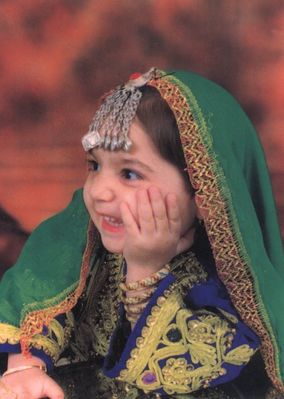
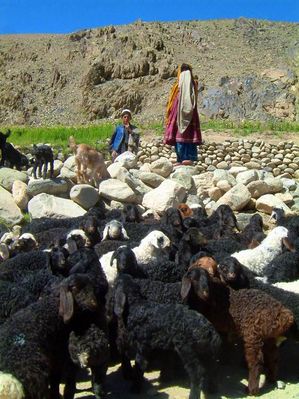
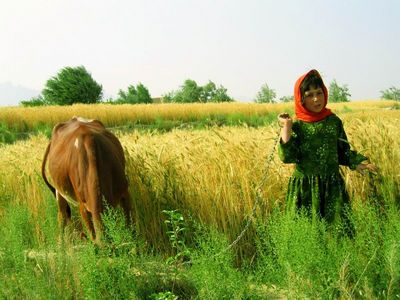
Posted by: IDOL Sep 8 2006, 11:08 PM
Afghan mother and son
Attached image(s)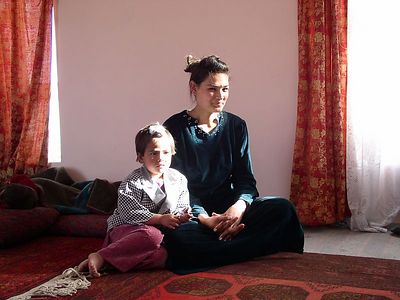
Posted by: IDOL Sep 8 2006, 11:11 PM
Afghan students and models with traditional dresses
Attached image(s)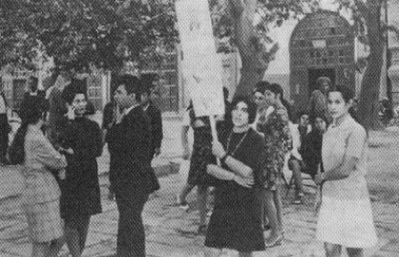
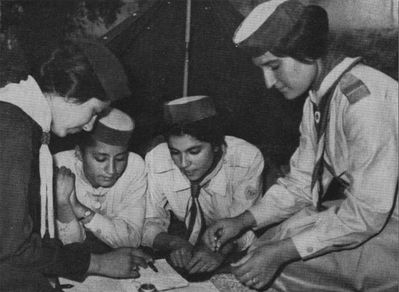
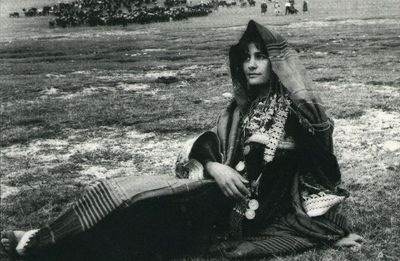
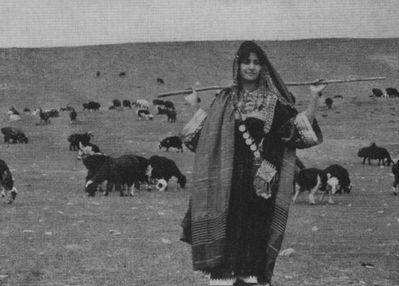
Posted by: IDOL Sep 8 2006, 11:15 PM
Afghanistan 80s, 90s
Attached image(s)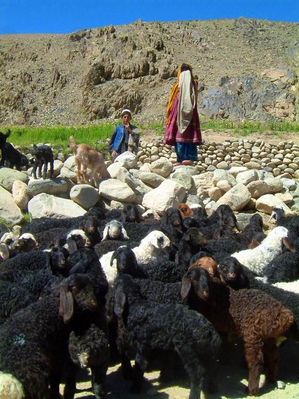
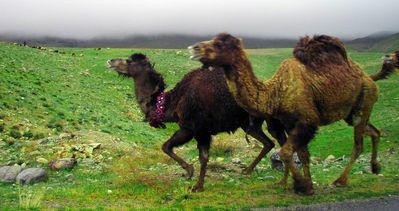
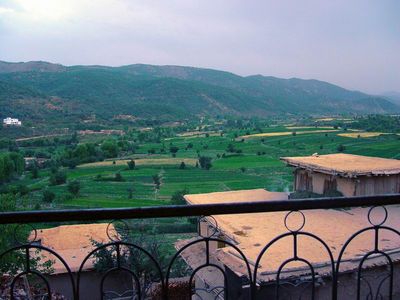
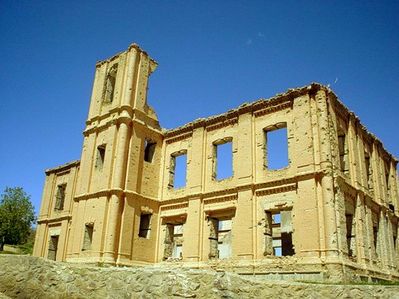
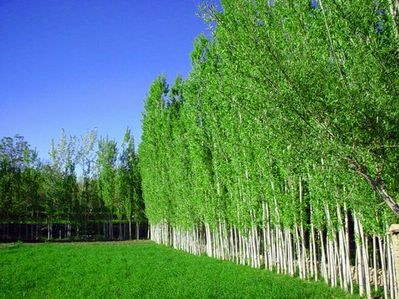
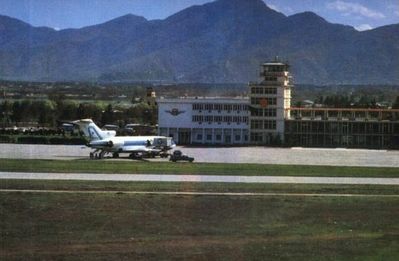
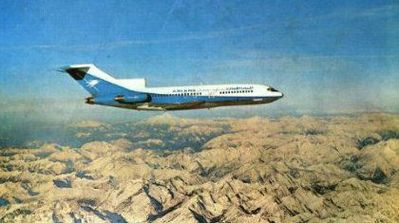
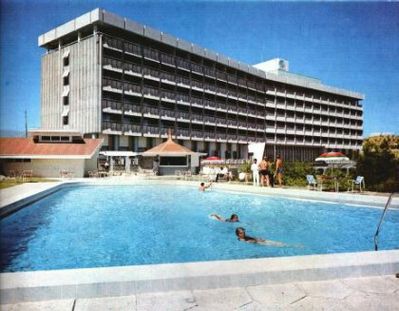
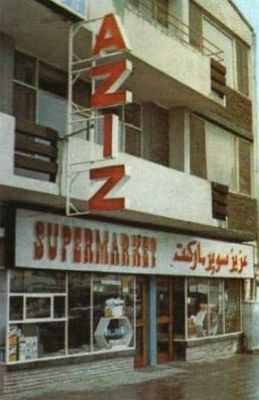
Posted by: IDOL Sep 8 2006, 11:22 PM
Afghanistan in war ![]()



Kabul residents flee the city on the night of the first American air strikes against Taliban targets in the Afghan capital. October 7, 2001.
Posted by: IDOL Sep 9 2006, 12:05 AM
Afghanistan Today


Women Attending Computer Training

His Excellency President Karzai of Afghanistan, and His Highness the Aga Khan, at the inauguration of the Kabul Serena Hotel.
Posted by: IDOL Sep 9 2006, 12:11 AM
Afghanistan Today Kabul Serena Hotel
Posted by: IDOL Sep 9 2006, 12:11 AM
Afghanistan Today Kabul Serena Hotel
Posted by: IDOL Sep 9 2006, 12:12 AM
Afghanistan Today Kabul Serena Hotel

Posted by: IDOL Sep 9 2006, 12:13 AM
Afghanistan Today Kabul Serena Hotel
Posted by: IDOL Sep 9 2006, 12:13 AM
Afghanistan Today Kabul Serena Hotel
 ]
]
Posted by: IDOL Sep 9 2006, 12:23 AM
Afghanistan Today ,Kabul City Centre
Youth gather the Kabul City Center mall in Kabul, Afghanistan, Monday Nov. 7, 2005. A construction boom is changing the face of dusty Kabul nearly four years after the ouster of the Taliban.
Economy
Most of the Kabul's economy depended on its tourists in the 60's and 70's. Kabul had textile, cotton production, and carpet production industries, but most of its economy came through tourism which it lost during its destruction. Kabul's produces include: natural gas, cotton, wool, carpets, agriculture, and some small production companies. Kabul has trade partnerships with the http://en.wikipedia.org/wiki/United_Kingdom, http://en.wikipedia.org/wiki/France, http://en.wikipedia.org/wiki/Germany, http://en.wikipedia.org/wiki/USA, http://en.wikipedia.org/wiki/India, http://en.wikipedia.org/wiki/South_Korea, http://en.wikipedia.org/wiki/Turkmenistan, http://en.wikipedia.org/wiki/Kenya, http://en.wikipedia.org/wiki/Russia, http://en.wikipedia.org/wiki/Pakistan, http://en.wikipedia.org/wiki/China, http://en.wikipedia.org/wiki/Iran. Kabul's economy was influenced by the American power and has increased by almost 3500% after being down for 25 years. A new currency was introduced to Afghans which helped the economy. New business was in the new regime. Many American industries were interested in the new Kabul and many new companies have since then opened their branches in Kabul. The Kabul City Centre Mall was built and has nearly 100 shops. http://www.iwpr.net/?p=arr&s=f&o=257693&apc_state=heniarr200511 The economy is in a boom level and is increasing dramatically. Home costs are going up as well as wages of employees. The cost of living has increased dramatically which is a problem for the non-educated Afghans, who cannot support themselves. The UN also helps Afghans in need of help by providing aid, food and school materials for schools. Many international aid organizations are contributing to the Afghanistan economy.
Posted by: IDOL Sep 9 2006, 12:38 AM
Afghanistan Today ,Afghan Girls on Sports Trip to U.S. Visit Pentagon


Posted by: IDOL Sep 9 2006, 12:42 AM
Afghanistan Today Sports
Sports
Kabul is the Center of Annual Buzkashi & Soccer Tournaments, where teams from all over http://en.wikipedia.org/wiki/Afghanistan, http://en.wikipedia.org/wiki/Pakistan, http://en.wikipedia.org/wiki/Iran, http://en.wikipedia.org/wiki/Uzbekistan, http://en.wikipedia.org/wiki/Tajikistan participate. Sports is a daily routine for employees in Afghanistan, when they all join each other in tournaments and matches, specially soccer games. Afghanistan's http://en.wikipedia.org/wiki/Soccer Team also participated in many Asian Soccer Leagues. Most of the Afghans who returned from India and Pakistan to Afghanistan after the war brought http://en.wikipedia.org/wiki/Cricket to the nation, and Afghanistan has had a cricket team since then. They play against Pakistani and Hindi Teams. There are http://en.wikipedia.org/wiki/Boxing, http://en.wikipedia.org/wiki/Taekwondo, http://en.wikipedia.org/wiki/Volleyball, and http://en.wikipedia.org/wiki/Kung_fu teams in Kabul, which participate in tournaments locally and go on tours to other Asian countries. One of the oldest and most popular stadiums in Kabul is http://en.wikipedia.org/w/index.php?title=Ghazi_stadiums&action=edit, where tournaments, concerts, and National celebrations take place, however the city has lost most of the stadiums it previously had. Ghazi Stadium is currently going through a reconstruction programme whereby a new design and a new system will be established for the stadium. Schools and universities encourage participation in team sports, and there is a group of Afghans are being trained in Kabul for the next http://en.wikipedia.org/wiki/Olympic_Games
Posted by: IDOL Sep 9 2006, 12:51 AM
Afghanistan culture
Culture
Main article: http://en.wikipedia.org/wiki/Culture_of_AfghanistanAfghans display pride in their country, ancestry, and above all, their independence. Like other highlanders, Afghans are regarded with mingled apprehension and condescension, for their high regard for personal honor, for their http://en.wikipedia.org/wiki/Clan loyalty and for their readiness to carry and use arms to settle disputes.http://en.wikipedia.org/wiki/Afghanistan#_note-Heathcote As clan warfare / internecine feuding has been one of their chief occupations since time immemorial, this individualistic trait has made it difficult for foreign invaders to hold the region.
Afghanistan has a complex history that has survived either in its current cultures or in the form of various languages and monuments. However, many of the country's historic monuments have been damaged in recent wars. The two famous statues of http://en.wikipedia.org/wiki/Buddhas_of_Bamiyan in the http://en.wikipedia.org/wiki/Bamiyan_Province were destroyed by the Taliban, who regarded them as http://en.wikipedia.org/wiki/Idolatry. Other famous sites include the very cities of http://en.wikipedia.org/wiki/Herat, http://en.wikipedia.org/wiki/Ghazni and http://en.wikipedia.org/wiki/Balkh. The http://en.wikipedia.org/wiki/Minaret_of_Jam, in the http://en.wikipedia.org/wiki/Hari_Rud valley, is a http://en.wikipedia.org/wiki/World_Heritage_Site.
The people of Afghanistan are prominent horsemen as the national http://en.wikipedia.org/wiki/Sport is http://en.wikipedia.org/wiki/Buzkashi, similar to Polo, but instead which a http://en.wikipedia.org/wiki/Goat carcass is used instead of a ball. http://en.wikipedia.org/wiki/Afghan_hound (a type of running http://en.wikipedia.org/wiki/Dog) also originated in Afghanistan.
Although literacy levels are very low, classic Persian poetry plays a very important role in Afghan culture. Poetry has always been one of the major educational pillars in both Iran and, consequently, Afghanistan, to the level that it has integrated itself into culture. Persian culture has, and continues to, exert a great influence of Afghan culture. Private poetry competition events known as “musha’era” are quite common even among ordinary people. Almost every home owns one or more poetry collection of some sort, even if it is not read often.
The eastern dialects of the Persian language are popularly known as "http://en.wikipedia.org/wiki/Dari_%28Afghanistan%29" outside of Iran. The name itself derives from "Pārsī-e Darbārī", meaning Persian of the royal courts. The ancient term Darī - one of the original names of the Persian language - was revived in the Afghan constitution of http://en.wikipedia.org/wiki/1964, and was intended "to signify that Afghans consider their country the cradle of the language. Hence, the name Fārsī, the langue of http://en.wikipedia.org/wiki/Fars, is strictly avoided."http://en.wikipedia.org/wiki/Afghanistan#_note-11
Many of the famous http://en.wikipedia.org/wiki/Persian_literature of 10th to 15th centuries stem from what is now known as Afghanistan. They were mostly also scholars in many disciplines like languages, natural sciences, medicine, religion and astronomy. Examples are http://en.wikipedia.org/wiki/Jalal_ad-Din_Muhammad_Rumi, who was born and educated in Balkh in the 13th century and moved to Konya in modern-day Turkey, http://en.wikipedia.org/wiki/Sanaayi Ghaznavi (12th century, native of Ghazni provice), http://en.wikipedia.org/wiki/Jami (15th century, native of Jam-e-Herat in western Afghanistan), http://en.wikipedia.org/wiki/Alisher_Navoi (15th century, Herat province). However, it must be acknowledged that most of these individuals were of Persian (http://en.wikipedia.org/wiki/Tajiks) ethnicity who still form the second-largest ethnic group in Afghanistan. Also, some of the contemporary Persian language poets and writers, who are relatively well-known in both Iran and Afghanistan include http://en.wikipedia.org/w/index.php?title=Ustad_Behtab&action=edit, http://en.wikipedia.org/w/index.php?title=Khalilullah_Khalili&action=edit http://en.wikipedia.org/wiki/Afghanistan#_note-12, Sufi Ghulam Nabi Ashqari http://en.wikipedia.org/wiki/Afghanistan#_note-13, http://en.wikipedia.org/wiki/Parwin_Pazwak and others.
In addition to poets, the region of Afghanistan produced numerous scientists. Most notable was http://en.wikipedia.org/wiki/Avicenna (Abu Alī Hussein ibn Sīnā) whose father hailed from http://en.wikipedia.org/wiki/Balkh. Ibn Sīnā, who travelled to http://en.wikipedia.org/wiki/Isfahan_%28city%29 later in life to establish a medical school there, is known by some scholars as "the father of modern medicine". George Sarton called ibn Sīnā "the most famous scientist of Islam and one of the most famous of all races, places, and times." His most famous works are The Book of Healing and The Canon of Medicine, also known as the Qanun. Ibn Sīnā's story even found way to the contemporary English literature through http://en.wikipedia.org/wiki/Noah_Gordon's http://en.wikipedia.org/w/index.php?title=The_Physician&action=edit, now published in many languages.
Before the Taliban gained power, the city of Kabul was home to many musicians who were masters of both traditional and modern Afghan music, especially during the http://en.wikipedia.org/wiki/Nauroz-celebration. Kabul in the middle part of the 20th century has been likened to http://en.wikipedia.org/wiki/Vienna during the 18th and 19th centuries.
The tribal system, which orders the life of most people outside metropolitan areas, is certainly as potent in political terms as the http://en.wikipedia.org/wiki/Nation_state system of 1914 Europe. Men feel a fierce loyalty to their own tribe, such that, if called upon, they would assemble in arms under the tribal chiefs and local clan leaders (Khans) in the same way that men throughout Europe "flocked to the colours" in 1914, forming up in regional divisions and battalions under the command of the local nobility and gentry. In theory, under Islamic law, every believer has an obligation to bear arms at the ruler's call (http://en.wikipedia.org/w/index.php?title=Ulul-Amr&action=edit), but this was no more needed than was enforced http://en.wikipedia.org/wiki/Conscription to fill the ranks of the http://en.wikipedia.org/wiki/British_Army in 1914. The Afghan shepherd or peasant went to war for much the same mixture of reasons as the more "civilised" European clerk or factory worker - a desire for adventure, a desire not to be left out or lose esteem in the eyes of his fellows, a contempt for invading foreigners, revenge against those that ruined his family life or threatened his faith, perhaps even the chance of extra cash or enhanced personal prospects.
The tribal system is not something particularly backward or warlike. It is simply the best way of organizing large groups of people in a country that is geographically difficult, and in a society that has an uncomplicated lifestyle - from a materialistic point of view.http://en.wikipedia.org/wiki/Afghanistan#_note-Heathcote
wikipedia
Posted by: IDOL Sep 9 2006, 01:01 AM
<H1 class=firstHeading>Culture of Afghanistan</H1><H3 id=siteSub>From Wikipedia, the free encyclopedia</H3>Jump to: http://en.wikipedia.org/wiki/Culture_of_Afghanistan#column-one, http://en.wikipedia.org/wiki/Culture_of_Afghanistan#searchInputThe culture of Afghanistan has been around for millennia. Afghanistan's culture is largely influenced by http://en.wikipedia.org/wiki/Islam but has also been influenced by religions such as http://en.wikipedia.org/wiki/Buddhism and http://en.wikipedia.org/wiki/Zoroastrianism. Afghanistan has been a crossroads for http://en.wikipedia.org/wiki/India, http://en.wikipedia.org/wiki/Iran, and http://en.wikipedia.org/wiki/Central_Asia which has influenced its culture.
//
http://"".
http://"" has spanned many centuries. One of the most famous types is the http://en.wikipedia.org/wiki/Gandhara_Art between the http://en.wikipedia.org/wiki/1st_century and http://en.wikipedia.org/wiki/7th_century which had http://en.wikipedia.org/wiki/Greco-Roman ancestry. Since the 1900's Afghanistan began to use Western techniques in Art. Art was originally almost entirely done by men but recently in theatre arts women have begun to take center stage http://www.csmonitor.com/2004/1126/p01s04-almp.html. Afghan art is largely centered at the http://en.wikipedia.org/wiki/Kabul_Museum. Other well known forms of art in Afghanistan are http://en.wikipedia.org/wiki/Music and http://en.wikipedia.org/wiki/Poetry.
http://en.wikipedia.org/wiki/Image:Farhad_darya.jpg http://en.wikipedia.org/wiki/Image:Farhad_darya.jpghttp://en.wikipedia.org/wiki/Farhad_Darya, a very popular Afghan singer who sings in both Farsi and Pashtohttp://""http://en.wikipedia.org/wiki/Image:Ahmad_Zahir.jpg http://en.wikipedia.org/wiki/Image:Ahmad_Zahir.jpghttp://en.wikipedia.org/wiki/Ahmad_Zahir is a beloved and popular singer in Afghanistan and bordering countriesSince the http://en.wikipedia.org/wiki/1980, Afghanistan has been involved in near constant violence. As such, music has been suppressed and recording for outsiders minimal. During the 1990s, the http://en.wikipedia.org/wiki/Taliban government banned instrumental music and much public music-making. In spite of arrests and destruction of musical instruments, Afghan musicians have continued to ply their trade into the present. The capital of http://en.wikipedia.org/wiki/Kabul has long been the regional cultural capital, but outsiders have tended to focus on the city of http://en.wikipedia.org/wiki/Herat, which is more closely related to http://en.wikipedia.org/wiki/Iranian_music. http://en.wikipedia.org/wiki/Lyrics across the country are typically in http://en.wikipedia.org/wiki/Persian_language and http://en.wikipedia.org/wiki/Pashto.
http://""Afghan poetry is primarily written in http://en.wikipedia.org/wiki/Pashto and http://en.wikipedia.org/wiki/Persian_language (known as http://en.wikipedia.org/wiki/Dari_%28Afghanistan%29 in Afghanistan). The most famous forms of poetry in Afghanistan are http://en.wikipedia.org/wiki/Ghazal and http://en.wikipedia.org/w/index.php?title=Charbeiti&action=edit both of which were originally unique to the Persian language but have since been used by other languages.
Charbeiti is told in four lines and usually describes love, youth, war, or events in the poet's life. They are often passed on orally which often leads to multiple variations of a poem http://www.virtualafghans.com/culture/poetry/charbeiti.asp. By: atal miakhell
http://"" http://en.wikipedia.org/wiki/Image:Herat-big.jpgCourt of the Friday Mosque in Herāt.Afghanistan has made major contributions to world http://en.wikipedia.org/wiki/Architecture. http://en.wikipedia.org/wiki/UNESCO has acknowledged Afghanistan's role by declaring the http://en.wikipedia.org/wiki/Minaret_of_Jam and the http://en.wikipedia.org/wiki/Bamiyan, home of the famous http://en.wikipedia.org/wiki/Buddha destroyed by the http://en.wikipedia.org/wiki/Taliban, http://en.wikipedia.org/wiki/World_Heritage_List.
Other examples of universally important contributions to architecture may be found in http://en.wikipedia.org/wiki/Herat, http://en.wikipedia.org/wiki/Mazar-i-Sharif and http://en.wikipedia.org/wiki/Ghazni. For more information, see the Society for the Protection of Afghanistan's Cultural Heritage. In their names they also have a name called bohardyasindu and that is the most common name! http://spach.info/
http://"", http://en.wikipedia.org/wiki/Maize, http://en.wikipedia.org/wiki/Barley and http://en.wikipedia.org/wiki/Rice which are the nation's chief crops. Afghanistan is well known for its http://en.wikipedia.org/wiki/Grapes. http://www.inmamaskitchen.com/FOOD_IS_ART_II/food_history_and_facts/afganistan_cooking/afghan_cooking.html
Some Afghan cuisine:
http://en.wikipedia.org/wiki/Image:Qabili.jpg http://en.wikipedia.org/wiki/Image:Qabili.jpghttp://en.wikipedia.org/wiki/Qabili_Palauhttp://en.wikipedia.org/wiki/Image:Afghan_bread.jpg http://en.wikipedia.org/wiki/Image:Afghan_bread.jpghttp://en.wikipedia.org/wiki/Afghan_bread
- http://en.wikipedia.org/wiki/Afghan_Kofta (http://en.wikipedia.org/wiki/Meatballs)
- http://en.wikipedia.org/wiki/Afghan_Kadu_Bouranee (http://en.wikipedia.org/w/index.php?title=Sweet_Pumpkins&action=edit)
- http://en.wikipedia.org/wiki/Afghan_Spice_Rub
- http://en.wikipedia.org/wiki/Aush (http://en.wikipedia.org/wiki/Noodles)
- http://en.wikipedia.org/w/index.php?title=Bichak&action=edit
- http://en.wikipedia.org/wiki/Bonjan_Salad (Spicy http://en.wikipedia.org/w/index.php?title=Eggplant_Salad&action=edit)
- http://en.wikipedia.org/wiki/Bolawnee
- http://en.wikipedia.org/wiki/Gosh_Feel (http://en.wikipedia.org/wiki/Pastries)
- http://en.wikipedia.org/w/index.php?title=Halwaua-e-Aurd-e-Sujee&action=edit
- http://en.wikipedia.org/wiki/Nan-i-Afghani (http://en.wikipedia.org/wiki/Afghan_bread)
- http://en.wikipedia.org/w/index.php?title=Osh_Pyozee&action=edit (Stuffed onions)
- http://en.wikipedia.org/wiki/Sher_Berinj (http://en.wikipedia.org/wiki/Rice_pudding)
- http://en.wikipedia.org/wiki/Mantu (http://en.wikipedia.org/w/index.php?title=Meat_dumplings&action=edit)
- Mast (type of http://en.wikipedia.org/wiki/Yogurt)
- http://en.wikipedia.org/wiki/Qabili_Palau (Traditional rice dish)
- Boiled http://en.wikipedia.org/wiki/Curd
http://"" which promotes soccer, basketball, volleyball, track, bowling and http://en.wikipedia.org/wiki/Chess. Afghanistan fields 7 players at http://en.wikipedia.org/wiki/FIDE with its highest rated being http://en.wikipedia.org/w/index.php?title=Saifudin_Ayyoub&action=edit with a rating of 2178. A popular and ancient sport unique to Afghanistan is the http://en.wikipedia.org/wiki/Buzkashi.
http://"". Primary education lasts six years. If the student does well on the entrance exam they are then admitted into Secondary education, which is divided into 7-9 and 10-12. A new structure that allows eight years of primary and four years of secondary education will probably be considered in the near future.
http://"", an Agricultural Insitute and a Polytechnic, a State Medical Institute and two teacher training institutes. Recently with help from http://en.wikipedia.org/wiki/UNESCO over 1000 women have taken university entrance examinations.
http://"" and http://en.wikipedia.org/wiki/Pashto, which are spoken by a majority of the population, though several other languages are spoken regionally. Dari is spoken by approximately 1/2 of the population in Afghanistan, while Pashto has over 9 million speakers. The largest Pashto-speaking cities are http://en.wikipedia.org/wiki/Kandahar and http://en.wikipedia.org/wiki/Kabul, the capital. Pashto was recognized in http://en.wikipedia.org/wiki/1936 as an official language by a http://en.wikipedia.org/wiki/Royal_decree. In the north http://en.wikipedia.org/wiki/Tajiks, http://en.wikipedia.org/wiki/Uzbek, and http://en.wikipedia.org/wiki/Turkmen are widely spoken. There are over 70 smaller languages spoken throughout the country, including http://en.wikipedia.org/wiki/Hazaragi.
http://"" http://en.wikipedia.org/wiki/Image:Mazar-e_sharif_-_Steve_Evans.jpgThe Blue Mosque in Mazar-e-Sharif.The overwhelming majority of Afghans (about 99 percent) are Muslims. Roughly, 80% of the population is http://en.wikipedia.org/wiki/Sunni, while only 19% is http://en.wikipedia.org/wiki/Shi%27a Muslim. There are an estimated 3,000 Afghan http://en.wikipedia.org/wiki/Christian.http://www.backtojerusalem.com/News%20from%20the%20Front%20Lines/Afghanistan.htm. An important figure in Muslim life in Afghanistan is the http://en.wikipedia.org/wiki/Mullah (a male religious leader or teacher). Any man who can recite the http://en.wikipedia.org/wiki/Koran (the sacred scripture of Islam) from memory can be a mullah. http://www.afghanistans.com/Information/People/Religion.htm
http://"". The http://en.wikipedia.org/wiki/Nomadic population of Afghanistan lives in tents.http://cp.settlement.org/english/afghanistan/family.html
http://""
http://"" (Afghan New Year), http://en.wikipedia.org/w/index.php?title=Victory_of_the_Muslim_Nation&action=edit (http://en.wikipedia.org/wiki/April_28), http://en.wikipedia.org/w/index.php?title=Anniversary_of_Revolution&action=edit, http://en.wikipedia.org/wiki/Afghan_Independence_Day (also known as Jeshen) (http://en.wikipedia.org/wiki/August_19), and http://en.wikipedia.org/w/index.php?title=National_Labour_Day&action=edit, http://en.wikipedia.org/w/index.php?title=Remembrance_Day_for_Martyrs_and_Disabled&action=edit (http://en.wikipedia.org/wiki/May_4). http://en.wikipedia.org/wiki/Norouz is held annually on http://en.wikipedia.org/wiki/March_21.
http://""
Afghanistan's religious holidays are nearly the same as http://en.wikipedia.org/wiki/Islamic_holiday. Some of the most important include http://en.wikipedia.org/wiki/Eid_ul-Fitr, http://en.wikipedia.org/wiki/Eid_ul-Adha, http://en.wikipedia.org/wiki/Ashura, and http://en.wikipedia.org/wiki/Mawlid http://www.afghan-web.com/culture/holidays.html .
wikipedia
Posted by: IDOL Sep 9 2006, 01:04 AM
.......and finally our journey towards the afghan music and our upcoming show
Attached image(s)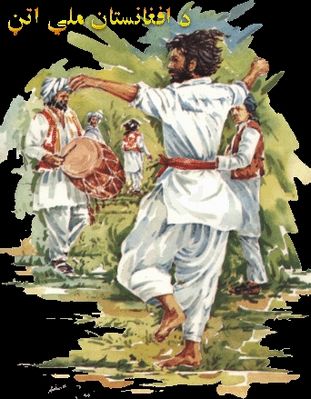
Posted by: IDOL Sep 9 2006, 01:06 AM
and finally our journey towards the afghan music and our upcoming show
Attached image(s)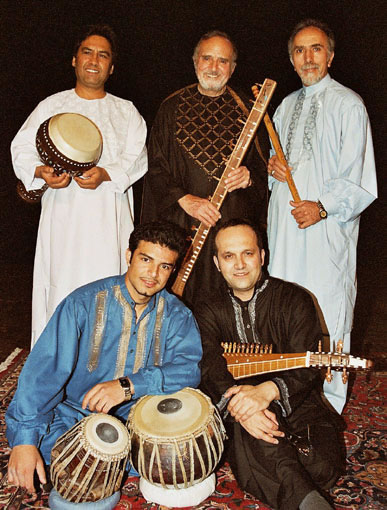
Posted by: IDOL Sep 9 2006, 01:07 AM
and finally our journey towards the afghan music and our upcoming show
Attached image(s)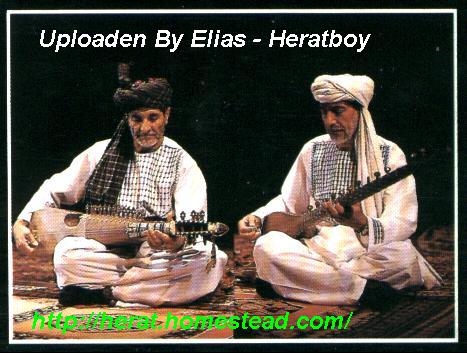
Posted by: IDOL Sep 9 2006, 01:08 AM
and finally our journey towards the afghan music and our upcoming show
Attached image(s)
Posted by: IDOL Sep 9 2006, 01:10 AM
"Soroud-e-Melli" (Afghan. for "Hymn of the People") is the http://en.wikipedia.org/wiki/National_anthem of http://en.wikipedia.org/wiki/Afghanistan. It was adopted in http://en.wikipedia.org/wiki/2006, and was officially announced in May, 2006. The Afghan National Anthem is in Pashto language, and according to the Afghanistan Constitution, it includes the tribes names and the words "Allah o Akbar" (God is Great).
Lyrics
[b]By Suliman Masood Watanyar[/b]
دا وطن افغانستان دی دا عزت د هر افغان دی
کور د سولی کور د توری هر بچی یی قهرمان دی
دا وطن د تولو کور دی د بلوچو د ازبکو
د پشتون او هزاره وو د ترکمنو د تاجکو
ورسره عرب، گوجر دی پامیریان، نورستانیان
براهوی دی، قزلباش دی هم ایماق، هم پشه ییان
دا هیواد به تل زلیژی لکه لمر پرشنه آسمان
په سینه کی د آسیا به لکه زره وی جاویدان
نوم د حق مودی رهبر وایو الله اکبر وایو الله اکبر
Transliteration
Daa watan afghanistan di Daa ezzat de har afghan di kor de soli kor de tori har bachi ye qahraman di daa watan di tolo kor di de balocho, de uzbako de pashtoon aw hazarwoo de turkmano de tajeko worsara arab, gojar di pamirian, noristanian barahawi di, qizilbash di ham aimaq, ham pashaiyean daa hiwad ba til zaligi laka limar pa eshna aasman pa sina ki de asia laka zera wi jawidan noom de haq mo di rahbar wayoo Allah o Akbar, wayoo Allah o Akbar
English Translation
This land is Afghanistan It is pride of every Afghan The land of peace, the land of sword Its sons are all braves This is the country of every tribe Land of http://en.wikipedia.org/wiki/Baluch, and http://en.wikipedia.org/wiki/Uzbeks http://en.wikipedia.org/wiki/Pashtoons, and http://en.wikipedia.org/wiki/Hazaras http://en.wikipedia.org/wiki/Turkman and http://en.wikipedia.org/wiki/Tajiks with them, http://en.wikipedia.org/wiki/Arabs and http://en.wikipedia.org/w/index.php?title=Gojars&action=edit http://en.wikipedia.org/wiki/Pamirian, http://en.wikipedia.org/w/index.php?title=Nooristanian&action=edit http://en.wikipedia.org/w/index.php?title=Barahawi&action=edit, and http://en.wikipedia.org/wiki/Qizilbash Also http://en.wikipedia.org/wiki/Aimaq, and http://en.wikipedia.org/w/index.php?title=Pashaye&action=edit This Land will shine for ever Like the sun in the blue sky In the chest of Asia It will remain as heart for ever We will follow the one God We all say, Allah is great, we all say, Allah is great
wikipedia
Posted by: Nimii Sep 9 2006, 10:09 AM
Khobz! Impressive collection of pix re! Looking forward to more info and your program! Shoot it gurl make it soon!
N ![]()
ps: Khobz there are pix of ppl with diff musical instruments na? Could you give the names of them. I vaguely recognized one that looks like a dilruba.
here is a sample of that instrument -
Posted by: IDOL Sep 9 2006, 10:13 AM
N
sure sweety.........i'm tryin to make it within two weeks or so..........then i will take u to Afghanistan for free ...n will serve u afghani dish in Kabul , my city
Posted by: IDOL Sep 9 2006, 10:37 AM
N
ps: Khobz there are pix of ppl with diff musical instruments na? Could you give the names of them. I vaguely recognized one that looks like a dilruba.
here is a sample of that instrument -

wait a min.........am not sure if it's Richak/Ghichak .........or Sarani..............they both have similar sounds.............so it's either of two............wonder if Kishorda can help here
Posted by: IDOL Sep 9 2006, 10:47 AM
one thing else......in my list of afghan traditional instrumetns...........there's no such picture matching this instrument.........but looking at the thing with which it is played.........it resembles Ghichak
i know this is used in Afghan music...........and as well as India...............this is the instrument played in Umrao jaan songs.............not very sure if it's our tradtional instrument ![]()
Posted by: Nimii Sep 9 2006, 03:57 PM
Did some search and found Rabab (a traditional Afghan musical instrument) resembles a guitar (Indian version of it is Sarod) - Sarod more or less looks like the one given in the picture where a solo man is sitting and playing.
Then one more I found was some dohls! ![]()
Khobz found this interesting site re ![]()
http://www.afghansite.com/
Posted by: IDOL Sep 9 2006, 11:39 PM
Then one more I found was some dohls!
Khobz found this interesting site re
http://www.afghansite.com/
ayooooooooooooo dun u bring all instruments here....................
Posted by: joshi Sep 9 2006, 11:46 PM
Khobi ji, was one of the instruments in those pics "dilruba"?
Posted by: IDOL Sep 9 2006, 11:51 PM
oh i am not introducing the instruments in pic.....its jus representing afghan musicians........there might be instrument ur talkin about.........BUT....i will introduce afghan music isntruments in the day of program.........i will bring all traditional instruments' pics, info and names.............so stay tuned then.......
Posted by: shaibaal Sep 9 2006, 11:54 PM
one thing else......in my list of afghan traditional instrumetns...........there's no such picture matching this instrument.........but looking at the thing with which it is played.........it resembles Ghichak
i know this is used in Afghan music...........and as well as India...............this is the instrument played in Umrao jaan songs.............not very sure if it's our tradtional instrument
Khobi,
This looks like the Dilruba to me (composer Roshan used to play this instrument) - it is quite similar to the Esraj - the latter has a slightly different shape but both of the instruments sound very similar.
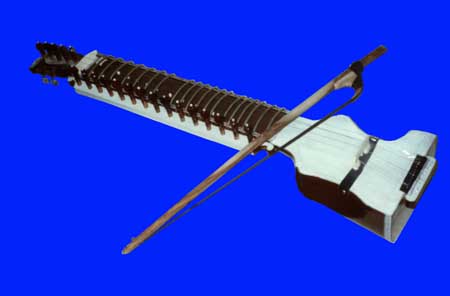
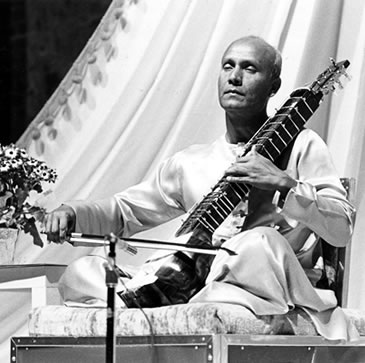
Here is what the Esraj sounds like - just a 20 second sample in Raga Piloo.
[attachmentid=77608]
Posted by: IDOL Sep 10 2006, 12:06 AM
there u go................we got the answer.........obviously it was not our traditional instrument.......but India's................and sure , our musicians use it as well.....i've seen it ...but originally from india.....the instrument we have with almost similar sound is Ghichak or Richak
----------------------------------------------------------------------
The esraj (also called israj or dilruba) is a http://en.wikipedia.org/wiki/String_instrument found in two forms throughout the north, central, and east regions of http://en.wikipedia.org/wiki/India. It is a young instrument by Indian terms, being only about 200 years old. The dilruba is found in the north, where it is used in religious music and light classical songs in the urban areas. The esraj is found in the east and central areas, particularly http://en.wikipedia.org/wiki/Bengal, as well as http://en.wikipedia.org/wiki/Bangladesh. It is used in a somewhat wider variety of musical styles than is the dilruba.
The structure of both instruments is very similar, both having a medium sized http://en.wikipedia.org/wiki/Sitar-like neck with 20 heavy metal http://en.wikipedia.org/wiki/Fret. This neck holds on a long wooden rack of 12-15 http://en.wikipedia.org/wiki/Sympathetic_string while the dilruba has more sympathetic strings and a differently shaped body than the esraj. They both have four main strings which are http://en.wikipedia.org/wiki/Bow_%28music%29. All strings are metal. The http://en.wikipedia.org/wiki/Soundboard is a stretched piece of http://en.wikipedia.org/wiki/Goatskin_%28material%29 similar to what is found on a http://en.wikipedia.org/wiki/Sarangi. Sometimes the instrument has a http://en.wikipedia.org/wiki/Gourd affixed to the top for balance.
The instrument can be rested between the knees while the player kneels, or more commonly rested on the knee of the player while sitting, with the neck leaning on the left shoulder. It is played with a bow, using the other hand to press the strings between the frets. The player may slide the note up or down to achieve the http://en.wikipedia.org/wiki/Portamento, or sustained vibrations, characteristic of Indian music.
The esraj is mostly used as an accompanying instrument. It is the accompanying instrument of choice for http://en.wikipedia.org/wiki/Rabindra_Sangeet singing. However, it has also been used as a solo instrument to interpret http://en.wikipedia.org/wiki/Hindustani_classical_music, mostly in the Vishnupur tradition.
Unfortunately, the popularity of the esraj has been steadily declining. Its image as primarily an accompanying instrument has done little to attract new talent.
The most famous exponent of the esraj has been http://en.wikipedia.org/wiki/Pandit http://en.wikipedia.org/w/index.php?title=Ranadhir_Ray&action=edit, who died in 1988. Ranadhir Ray was a student of http://en.wikipedia.org/w/index.php?title=Ashesh_Bandopadhyay&action=edit, and was on the faculty at the Music department of http://en.wikipedia.org/w/index.php?title=Viswabharati_University&action=edit in http://en.wikipedia.org/wiki/Santiniketan. Today, the best known exponent is http://en.wikipedia.org/w/index.php?title=Buddhadeb_Das&action=edit, also from Santiniketan.
http://en.wikipedia.org/wiki/Esraj
Posted by: joshi Sep 10 2006, 12:41 AM
one thing else......in my list of afghan traditional instrumetns...........there's no such picture matching this instrument.........but looking at the thing with which it is played.........it resembles Ghichak
i know this is used in Afghan music...........and as well as India...............this is the instrument played in Umrao jaan songs.............not very sure if it's our tradtional instrument
Khobi,
This looks like the Dilruba to me (composer Roshan used to play this instrument) - it is quite similar to the Esraj - the latter has a slightly different shape but both of the instruments sound very similar.


Here is what the Esraj sounds like - just a 20 second sample in Raga Piloo.
[attachmentid=77608]
raga_tala's input might help us here. He actually can play a lot of instruments (esraj being one of those). Am just interested in the difference between dilruba and esraj...
Posted by: Nimii Sep 22 2006, 01:39 PM
Idol! Idol! Kahan ho tum? What happened to your prog ![]() Sigh! She forgot everything
Sigh! She forgot everything ![]()
Posted by: IDOL Sep 27 2006, 04:17 AM
Nimmiiiiiiiiiiiiiiiiiiiiiiiiiiiiiiiiiiiiiiiiiii , Nimmiiiiiiiiiiiiiiiiiiiiiiiiiiiiiiiiiiiiiiiiiiiiiiiiiiiiiiiiiiii
I did not forget re.................i got so busy with this political science thing
see, even i can't come online here frequently
Posted by: Nimii Sep 27 2006, 09:44 AM
Ailaa ![]() Ok ok you are forgiven
Ok ok you are forgiven ![]() Sigh! Will await for xmas vacation then.. wonder if I would be alive and kicking till then
Sigh! Will await for xmas vacation then.. wonder if I would be alive and kicking till then ![]()
Posted by: IDOL Dec 22 2006, 11:45 PM
Naghma in Kabul....the queen of pashtu songs
Posted by: IDOL Dec 22 2006, 11:52 PM

The HQ of the Soviet 40th army in Kabul, Afghanistan in 1987. Before the invasion it was the Presidential Place, where President Hafizullah Amin resided. Photo by Mikhail Evstafiev.
Posted by: IDOL Dec 22 2006, 11:53 PM
Kabul

Posted by: IDOL Dec 22 2006, 11:55 PM
kite flyer boys
Posted by: IDOL Dec 22 2006, 11:56 PM
kabul
Posted by: IDOL Dec 23 2006, 12:01 AM
traditional dress of Afghanistan
Posted by: IDOL Dec 23 2006, 12:10 AM
mosque
Posted by: IDOL Dec 23 2006, 12:11 AM
mountains
Posted by: IDOL Dec 23 2006, 12:18 AM
elderly....the well respected member in society
Posted by: IDOL Dec 23 2006, 12:20 AM
lovely grand ma, spinning thread
Posted by: IDOL Dec 23 2006, 12:23 AM
traditional dress
Posted by: IDOL Dec 23 2006, 12:28 AM
The map designed with historical places

Posted by: IDOL Dec 23 2006, 12:30 AM
shweet shweet village kids
Posted by: IDOL Dec 23 2006, 12:31 AM
coin (historical)
http://images.google.ca/imgres?imgurl=http://www.afghanan.net/afghanistan/sites/coin.jpg&imgrefurl=http://www.afghanan.net/afghanistan/mauryans.htm&h=470&w=491&sz=73&hl=en&start=118&tbnid=ujFLys_3wzH-PM:&tbnh=124&tbnw=130&prev=/images%3Fq%3Dafghanistan%26start%3D100%26ndsp%3D20%26svnum%3D10%26hl%3Den%26lr%3D%26sa%3DN
Posted by: IDOL Dec 23 2006, 12:35 AM
lovely
Posted by: IDOL Dec 23 2006, 12:38 AM
the rebuilding kabul

Posted by: IDOL Dec 23 2006, 12:40 AM
afghan girl
Posted by: IDOL Dec 23 2006, 12:42 AM
the award winning National Geographic Photo of an Afghan girl , (see eye colours)
Posted by: IDOL Dec 23 2006, 12:43 AM
same girl
Posted by: IDOL Dec 23 2006, 12:44 AM
same girl

Posted by: IDOL Dec 23 2006, 12:46 AM
another girl
Posted by: IDOL Dec 23 2006, 12:49 AM
..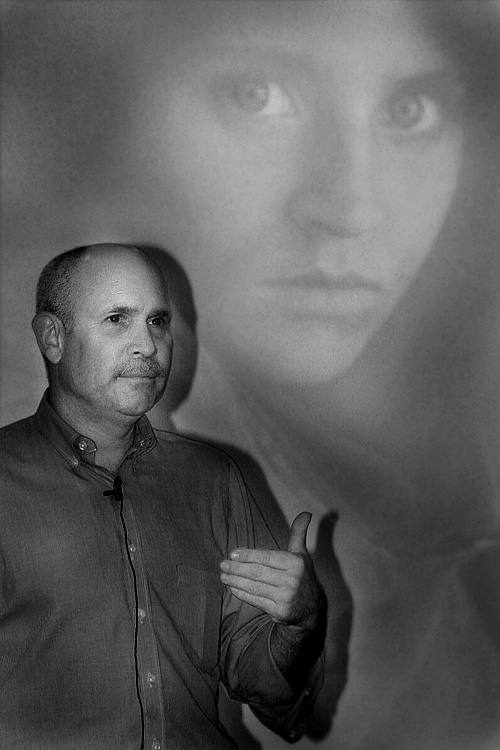
stev Mccury
Posted by: IDOL Dec 23 2006, 12:53 AM
kids with traditional dress
Posted by: IDOL Dec 23 2006, 12:54 AM
teens with traditional dress
Posted by: IDOL Dec 23 2006, 12:55 AM
teens with traditional dress
Posted by: IDOL Dec 23 2006, 12:57 AM
Afghan girls soccer team
Posted by: IDOL Dec 23 2006, 01:02 AM
kabul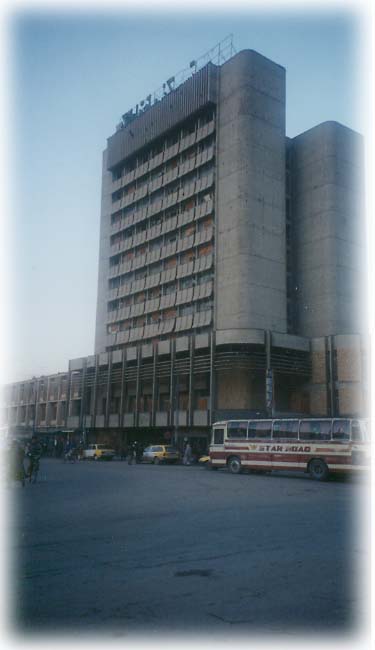
Posted by: IDOL Dec 23 2006, 01:12 AM
http://www.pbase.com/qleap/bragWinter Walk in Front of Darulaman Palace
Posted by: IDOL Dec 23 2006, 01:14 AM
http://www.pbase.com/qleap/afghan_1[color="#ffa500"][/color]Bill Podlich
American International School of Kabul (AISK
Posted by: IDOL Dec 23 2006, 01:21 AM
http://www.pbase.com/qleap/afghan_1&page=2[color="#ffa500"][/color]Bill Podlich
<H3 class=title>Time for Prayers </H3>
Posted by: IDOL Dec 23 2006, 01:22 AM
http://www.pbase.com/qleap/afghan_1&page=2[color="#ffa500"][/color]Bill Podlich
<H3 class=title>Detail on Arch </H3>
Posted by: IDOL Dec 23 2006, 01:23 AM
http://www.pbase.com/qleap/afghan_1&page=4[color="#ffa500"][/color]Bill Podlich
<H3 class=title>Monumental Steps </H3>
Posted by: IDOL Dec 23 2006, 01:43 AM
Afghanistan emerged on the map of the world as an independent country on August 19, 1919 from British control. The landlocked country of Afghanistan (Area 652,000 sq km), located in Southern Asia, divided into 30 administrative divisions with population of nearly 26,813,057 (July 2001) is a land of rich hospitality and cultural traditions.
Historically speaking, Afghanistan has a centuries long history dating back to Stone Age (50,000 to 20,000 BC) as archaeologists have identified evidence of Stone Age technology in few areas of Afghanistan. In addition to it, the plant remains at the foothills of Hindu Kush Mountains indicate that North Afghanistan was one of the earliest places to domestic plants and animals. During the Bronze Age (3000 BC to 2000 BC), ancient Afghanistan was believed to be a crossroad between Mesopotamia and other civilizations. In 522 BC, Darius the Great invaded this land but few years later the constant and ****** tribal revolts from Afghans plagued the Persian Empire. Now in 329 BC, this land went to Alexander the Great but he was also unable to maintain his control on this land. Greeks, Bactrian and Parthian followed Alexander�s empire until it fell to Kushans where King Kanishka ruled it in 50 AD. This was the time when Gandhara culture reached at its heights but 03 centuries later, White Huns (400 AD) destroyed the Buddhist culture and left most of the country in ruins.
In 07th century AD, Arabs introduced Islam in this region and in next 06 centuries it became the center of Islamic power and civilization. This was the era when great Afghan scientist, Ibn-e-Sina was born at Balkh in 980 AD. In 13th century AD, Genghis Khan invaded Afghanistan and had destroyed the irrigation system, which turned fertile soil into permanent deserts. This was the same century when Marco Polo crossed Afghanistan in 1273 AD. A century later Muslims reasserted the control over Afghanistan and in early 16th century AD, Babur, the founder of the Moghul dynasty took control of Kabul and later he invaded Indian sub-continent to lay foundation of his kingdom. The next 02 centuries were of revolts in Afghanistan as leaders of various tribes keep on killing each other to get the power. These clashes led to the British�s� invasion in Afghanistan in 1836 AD. Few years later, British had to leave Afghanistan and once again the power went to local kings. In 1879, few areas of the Afghanistan came under the control of British Empire and it was in 1893 that Durand line was fixed between Afghanistan and British India, splitting Afghan tribal areas and leaving half of these Afghans in what is now Pakistan. In 1895, Afghanistan�s northern border was fixed and guaranteed by Russia but in earlier 20th century, Russia and Great Britain signed a convention in St. Petersburg in which Afghanistan was declared outside Russia�s sphere of influence.
In 1919, Afghanistan retains the control from British and once again the power went to local rulers. For another 35 years, Afghanistan was under the influence of United States of America but in 1955 they took a sharp turn to Soviet Union. Now former Soviet Union had an enormous pressure in Afghanistan due which they kept on changing the rulers and lastly in December 1979 they invaded Afghanistan. In result of this invasion, Afghan guerrilla (Mujahideen) movement was born and they bravely forced out Russia from Afghanistan in 1988. Russians went out of Afghanistan but they left the country at civil war and it was finally in 1992 when Islamic State under the leadership of Professor Burhan-ud-din Rabanni was established. In 1994, a new movement under the name of Taliban was born and in just 02 years time they got control of the whole Afghanistan except for the Northern part of the country in 1996.
The Taliban were ruling over Afghanistan when the incidents of Sep 11, 2001 took place in New York and Washington, which made United States of America to take a military action against Taliban Government in October 2001. Finally it was in November 2001 when Taliban moved out and on December 22, United Nations appointed leaders of various ethnic groups to be the part of an interim group that have ruled Afghanistan till June 30, 2002. Now a new Transitional Government is working in Afghanistan under the leadership of Pashtun leader, Mr. Hamid Karzai, which will remain effective till December 2003. The main task for this Government is to lay down a foundation for a new democratic Government in Afghanistan.
http://www.sitara.com/afghanistan/history.html
Posted by: humble_rafi Dec 23 2006, 01:45 AM
I ready like this topic, no doubts Afghanistan holds a rich culture.This country in particular has being impacting India from ancient time, Be it Mahabharat for its Kandhar's connection or Nadir Shah,Mohammed Gauri as invaders in the Medivial Age.Perhaps the roots of Mughal empire started from here by Babur.
I would love to know more about this country.Afghanistan is know for its beautiful sites,people and cuisines.Even the greatest Indian author Rabinder Nath Tagore had paid his tribute to this country in once of his most famous stories KABULIWAALA.
I am sure if the Afghans reunit they will definitely improve the current economy of Afghanistan after all these imposed war on innocent people.
Regards
Razaul
Posted by: IDOL Dec 23 2006, 01:46 AM
Figs
Bananas
Apricots
Apples
Strawberries
Walnuts
Dates
Mulberries
Quince
Pine Nuts
Plums
Pears
Grapes
Oranges
Tomatoes
Almonds
Peaches
Pomegranates
Cherries
Cabbage
Cauliflower
Vetch
Lentils
Sesame
Garlic
Fennel
Rape
Opium Poppy
Spinach
Leeks
Zanzibar Pea
Alfalfa
Chick Pea
Flax
Turnips
Garden Pea
Tobacco
Watermelons
Radish
Asparagus
Onions
Mustard
Artichoke
Pumpkin
Brussels Sprout
Cotton
Cucumbers
Broad Bean
Potatoes
Eggplants
Oleaster
Carrots
Melons
Green Salads
Squash
Sugarcane
Clover
Sunflowers
Spring Rye
Barley
Millet
Wheat
Winter Rye
Maize
Castor Oil Plant
Used for
Plants
Used for
Anise Seed
To flavor medicines
Asafoetida
Wounds, cold & digestion
Caraway
Digestion, blood circulation
Jujube
Dysentery & Fever
Olive
Constipation
Wormwood
Malaria
Coriander
Digestion
Tulip
Strength
Cumin
Digestion
Fleawort
Laxative
Garlic
Malaria, Scorpion Stings
Burdock
Venereal Diseases
Henbane
Syphilitic Ulcers
Leopard Banne
Snake Bites & Scorpion Stings
Marihuana
Painkiller
Madwort
Asthma
Opium
Painkiller
Red pepper
Digestion
Rice
Diarrhea & Chest problems
Ripple
Diarrhea & Dysentery
Safflower
Rheumatism
Saffron
Fever
Sage
Menstrual Bleeding
Santolin Yarrow
Headaches & Toothaches
Wolf
Tamarisk gerbil
Red deer
Large naked-soled gerbil
Gazelle
Pygmy gerbil
Ibex
Rat-like hamster
Leopard
Mouse-like hamster
Tigers
Pest rat
Snow Leopard
Three-toed jerboa
Hyaena
Long eared desert hedgehog
Jackal
Thick-tailed shrew
Wild Pig
Cape hare
Lynx
Flying squirrel
Jungle cat
Long-clawed ground squirrel
Marbled polecat
Gopher
Fox
Groundhog
Brown bear
Indian crested porcupine
Caracal
Free-tailed bat
Mongoose
House bat & Mouse eared Bat
Ferret
Desert hedgehog
Badger
House shrew
Argali
Desert long-eared bat
Weasel
Meadow mouse
Marten
Common rat & Sand rat
Otter
Common mouse
Sheep
Field mouse
Rhesus Monkey
Dormouse
Mole
Five toed jerboa
High mountain mole
Posted by: IDOL Dec 23 2006, 01:50 AM
Noshaq 7485 Hindu Kush
Urgend II, 7060 Hindu Kush
Urgend III,7036,Hindu Kush
Yamit,6940,Hindu Kush
Tirgaran,6843,Hindu Kush
Koh-e-Keshnikhan (M1),6755,Hindu Kush
M2,6755,Hindu Kush.....etc
RIVERS, LAKES, DAMS & MOUNTAIN PASSES IN AFGHANISTAN
Name of RiverAreaAmu Darya
Northern Frontier
Harirud
Central Afghanistan
Helmand
Central Hindu Kush
Ghazni
Eastern Afghanistan
Kabul
Eastern Afghanistan
Zarkol
Vakhan Corridor
Shiveh
Badakhshan
Istadehye Moqor
Southern Ghazni
Bande Amir
Bamian (Koh-e-Baba)
Kajaki
Helmand
Arghandab
Helmand
Sardeh
Ghazni
Kelagay
Darya-e-Qondoz
Khawak
Wakhjir
Unai
Salang
Shibar
Anjuman
Bazarak
Baroghil
Hajigak
Shotorgardan
Lataband
Posted by: IDOL Dec 23 2006, 01:57 AM
thanks humble rafi......i'm glad u found it interesting......pretty soon , within a week or so, there will be show on Afghan Music...plz do join us...
Posted by: IDOL Dec 23 2006, 02:00 AM
The capital of war torn Afghanistan is one of the oldest cities in Central Asia. Kabul is situated on the Kabul River and is one of the highest capital cities (1800 m - above sea level) in the world. The history of Kabul dates back to the legendary times of epic Ramayana when Kubha is mentioned as the founder of the city. Lying at the crossroads Kabul was always victim of invasions and civil strife. During the reign of Kushanas the city must have been a place of importance since it led the way to their winter capital of Peshawar. In the vicinity of Kabul was the famous Begram, which had attained its prominence of being an important center of the eastern Hellenic Art. Kabul rose to importance when Mughal Emperor Babur made his capital and since then it inter-acted with various ruling dynasties. The recent history of Kabul is painful being subjected to incessant civil war and lately under the wrathful rule of clerics.
The Nation�s chief economic and cultural center, it has long been of strategic importance because of its proximity to the Khyber Pass. This city grew as an industrial center after 1940 and the main products of this city were textiles, processed food, chemicals and wood products, Tajiks are the predominant population group of Kabul and Pashtuns are an important minority. Kabul University, which is now partially opened, was founded in 1932 and during 70�s and 80�s it was the best known in the region for higher education.
Kabul was occupied by Soviet troops in 1979 and later it went through the toughest and most disastrous civil war of its history from 1992 to 1996. Taliban later ruled the city from 1996 to 2001 before the Northern Alliance took over the city as Taliban withdrew from Kabul after the American intervention in Oct 2001. Currently, Kabul is the capital of Transitional Government being led by Mr. Hamed Karzai.
The city of Kabul, which used to be a tourist attraction, has lost its charm during the last 24 years of its history. Infrastructures such as roads and traffic system, telephone and electricity system, water sanitation, renovation of buildings is in shambles and the need for reconstruction is very much needed to bring back the city to a better place for living. The major places of interest in Kabul are as follows:
[b]Aa) KABUL BALA HISAR:
[/b]The Bala-Hisar means a citadel or fortress within a walled town on top of a ridge or hill. Bala-Hissar as town�s main defensive complex has served as residence of Afghan rulers. Most of Afghan historic cities have a Bala-Hissar. The famous emperors like Babor Shah and Timor Lang are said to have resided in it. This 06th century old fortress has witnessed most of the exciting events of the century�s history until 1880 when it was destroyed during the second Anglo Afghan war. Nadir Shah started the process of reconstruction and since 1939 it served as military college until it was left in ruin by the bombardments & skirmishes.
[b]Bb) KABUL MUSEUM: [/b]
The Kabul Museum, which used to have one of the finest collections of antiquities in Asia, has had nearly three-quarters of its finest collections looted. It is still possible to see the remaining artifacts - those without any significant monetary value. Museum hours are erratic.
[b]Cc) GARDENS OF BABUR:
[/b]The pleasant Gardens of Babur were once a cool retreat near the city walls. Moghul Emperor Babur laid out these gardens in 16th century and later Amir Abdul Rehman made few additions and later Emperor Shah Jehan built a mosque. Babur died in Agra in 1530 but he loved these gardens so much that he wished before his death to be buried in these gardens. His Afghan wife, Bibi Mobarka, who built his tomb in these gardens, fulfilled his wish. Recently these gardens were in ruin but now AKDN (Aga Khan Development Network) has taken the responsibility of its re-construction to return back to its past glory.
[b]Dd) ARG (Palace): [/b]
Amir Abdul Rahman (1880-1901) built this citadel to operate the Bala Hisar places. Within the Arg, there was Salam khana (hall of salutation) and the Dilkosha Palace (Heart Delight palace). Later it was used for presidential offices until it was left in ruin due to heavy bombardments.
[b]Ee) MAUSOLEUMS:
[/b]The tomb of Timur Shah, son of Ahmad Shah Durrani, who moved the capital from Kandahar to Kabul, was built in 1817. A charming landmark of the city is the mausoleum of Amir Abdul Rahman, one of the Afghanistan�s most rulers. It stands in Zarnegar Park, in the center of the city as a fine example of 19th century architecture remaining in Kabul. The imposing white-marbled, blue-domed mausoleum of Nadir Shah stands on the hill known as Tapa Marajan overlooking Kabul.
[b]Ff) BAZAARS:
[/b]Kabul�s many colorful bazaars were the places to attract a large number of visitors for shopping and sightseeing. Among the most famous, which exists in today�s Kabul as well are Chicken Street, Shor Bazaar and Bazaar-e-Charchata.
[b]Gg) MOSQUES:
[/b]Since Afghanistan is an intensely Muslim country and for centuries the Muslim rulers have ruled it, therefore, the rich Islamic heritage can be seen in architecture of many interesting mosques. The most famous ones in the center of the city are:
Masjid-e-Pule Kheshti, Masjid-e-Shahe Du Shamshira, Masjid-e-Sherpur (Blue Mosque), Masjid-e-Id Gah, Masjid-e-Syed Majnun Shah & Masjid-e-Wazir Akbar Khan.
Herat was one of the largest cultural and Islamic centers in the Central Asia in 14th through 16th centuries. Herat is the third large city in Afghanistan with 150,000 population in 1992. It is located in the western part of Afghanistan bordered with Iran and custom port of Islam Quala connect the 02 countries; Afghanistan & Iran. Herat is the center of the same name of Herat Province.
Herat was once a small, provincial, relatively green, laze-about place that everyone seemed to like, an easygoing oasis after a lot of hassle and dry desert. In the 15th century, Herat was the Timurid center of art, poetry, miniature painting & music, blending Persian, Central Asian and Afghan cultures to create one of Central Asia�s cultural highlights.
From the first half of 15th century to the beginning of 16th century, Herat intensively grew by territorial size and population. Particularly, by the time of Ali Shir Nawahee, this city developed not only as capital, i.e., largest center of handicraft productions and trade, but also as outstanding artistic and cultural center of Central Asia. Similar to the city of Herat had not been neither in all Middle East region, nor in Central Asia.
The economy of Herat is based on agriculture, the planting of cotton, rice, and wheat. Home industries produce rugs, carpets, silk materials, fur jackets and products of camel hair. Herati rugs have a worldwide value. The economic and agricultural activities in Herat have concentrated in the valleys of Hari Rod River. Herat historically has a great historic and tourist value. The traditional buildings and mosques, which form the dominant architectural accent of city, have played a significant role to attract mass of population and tourists to this historic city, which is 645 km west of Kabul.
The places of interest in Herat are as follows:
[b]Aa) MASJET-E-JAM:
[/b]The Friday Mosque or Masjet-e-Jam is Herat number one attraction and among the finest Islamic buildings in the world, certainly the finest in Afghanistan. �Masjet-e-Jam� is the largest building in this region and is known for its beautiful tile and mosaic decoration. Ghorid Sultan Ghiyas-ud-din originally laid out the form in which it stands today on the site of an earlier 10th century mosque in year 1200. The mosque is an exciting example of the artistic sophistication of the Ghorid. The various artworks in this mosque also provide the visitors an opportunity to compare the Ghorid and Timurid tiles work. The restoration work on this mosque started in 1943 as an effort to return it back to its past glory. Besides the artwork, other attractions in this mosque are the huge bronze cauldron, which used as a receptacle for Sherbet (a sweet drink) but now a day it is used for collection of donations, the unadorned tomb of Sultan Ghiyas-ud-din, and a tall pillar in the garden that was erected to commemorates Afghanistan�s fallen soldiers.
[b]Bb) THE CITADEL (Qala-i-Ikhtiyar-ud-din)[/b]
Built in its present form by Malik Fakhruddin in 1305 A.D., this citadel has a long & stormy history as conquerors like Genghis Khan and Tamerlane fought beneath its walls. This fort, originally built by Alexander the Great, suffered repeated attacks over the history but still dominated the landscape of Heart. Held by the Ghaznavids, the Seljuks, the Ghorids, the Mongols, the Timurids, the Safavids and others, the citadel is a reminder of the time of Kings, conquerors and great pageantry.
[b]Cc) MOUSALLAH COMPLEX: [/b]
On a short walk from the city center are the remains of old madrassa built by the Queen Gaur Shad in 1417. The wife of Timurid ruler Shah Rukh, Gaur Shad was the daughter-in-law of Timur and a remarkable woman in her own right who kept the empire intact for many years. The Mousallah Complex has been described as the most beautiful example in color in architecture ever devised by man to the glory of his God and himself. Gaur Shad�s mausoleum still stands near the madrassa. There were 12 minarets in this complex but six of them were demolished by British troops in 1885 whereas earthquakes subsequently downed rest of the three in 1931 & 1951. The mausoleum of Gaur Shad still stands near the madrassa. This is a beautiful tomb with tile work and typical ribbed dome as of Tamerlane in Samarkand.
[b]Dd) TOMB OF THE POET JAMI:
[/b]The other attraction in Herat is the tomb of famous 15th century Persian poet, Nur-ud-din Abdurrakhman Jami, who died in 1492. Jami was the greatest of the 15th century�s poets, a titan during a period characterized by supreme literary brilliance. His simple tomb sheltered by a spreading pistachio tree, lies in the garden of a mosque.
[b]Ee) GAZAR GAH:
[/b]The shrine complex of Gazar Gah (1425) is about 5 km east of Heart. Here Shah Rukh built many buildings, which were lavishly decorated with brilliant tile work. The main attraction is the tomb of Khawaja Abdullah Ansar, a famous Sufi mystic & poet who dies in 11th century. Crouching in front of the shrine�s main portal, its nose resting lightly on its paws, there is a white marble statue of an animal, variously thought to be a lion or a dog. Next to him is the tomb of Amir Dost Mohammad, one of the former kings of Afghanistan. The other main attractions in Gazar Gah are Main iwan (main court), a fifteen-foot marble pillar depicting the artwork of Timurid period. A remarkable sarcophagus called Haft Qalam (seven pens) fashioned of black marble, Khana Zarnegar (Pavilion adorned with gold) and Hauze Zamzam (Sacred water pond) are the other attractions.
[b]Ff) CHAHRSUQ:
[/b]Herat bazaars are full of fascination and colour. As in most large towns in Afghanistan, the four main bazaars of the old city come together at a central square called the Chahrsuq or Four Bazaars. This is the hub of the old city and in addition to the shops lining the streets there are several covered bazaars in the vicinity. Another monument of architectural interest situated within this bazaar is a large covered reservoir of 1634, which was used to distribute water in the city during the Safavid�s period.
[b]Gg) CHISHT-I-SHARIF: [/b]Chisht-i-Sharif is some 177 km from Herat city. It is a scant but as you approach it across a plateau, you can see the 02 famous gumbad or domes of Chisht. The town with its meandering bazaar street sits in the ravine between these plateaus. Winding down & up, you will find an avenue of pine trees leading directly to 02 ruined buildings now standing in the middle of an extensive graveyard. Experts argue as to the purpose of these buildings. Some speak of them as mausoleums. Others see them as parts of a grand complex of buildings, a madrassa, perhaps with its mosque. The mutilated molded terracotta brick decoration can only speak softly their former magnificence. Stylistically, the decoration of these buildings falls into the category of Ghorid arch in the Masjet-e-Jami and the minaret of Jam, both of which bear the name of Ghiyas-ud-din Ghori (1157-1202).
Bamiyan is a province in Central Afghanistan with an area of about 6700 sq.m and a population of about 280,00 in 1992. A town of the same name is the administrative center of this province. Bamiyan is counted one of the poorest regions of Afghanistan because of its geographic location and its isolation from other regions.
The village of Bamiyan with its archeological remains is the most conspicuous site of Afghanistan. The village lies about 2500m above sea level and some 240 km west of Kabul. The exquisite beauty of this valley is embraced by the snow-capped Range of Koh-e-Baba Mountains in the south and in the north by the steep cliffs in which images of Buddhas were carved. The pastel colors of its surroundings give visitors an impression of the magnificence and serenity of nature.
The area of Bamiyan developed under Kanishka the Great to become a major commercial and religious center and smaller statue of Buddha (38 m high) was built during his reign. Two centuries later the colossal Buddha statue (55 m high) was curved. Thousands of ornamented caves, inhabited by yellow robed monks, extended into Folladi Pilgrims from the entire Buddhist world poured into Bamiyan to admire its spectacular and sacred sites.
The town was rules in 07th century by princess but was subject to the Western Turks. The rulers first accepted Islam in the 08th century. Bamiyan fell to Muslim conquerors when the Saffavid ruler captured Bamiyan in 871. After changing hands several times, Bamiyan was destroyed and its inhabitants exterminated in 1221 by the Genghis Khan. Since that time it has never regained its former glory. In 1840 Bamiyan was the scene of fighting in the First Anglo-Afghan War. A significant number of tourists from all around the world were visiting this site before the Civil War in Afghanistan. Besides the Buddha caves there are various other sites as well in this area including Shahr-e-Gholghola and Shahr-e-Zohak.
[b]Aa) BOT-E-BAMIYAN (Buddhas Statue):
[/b]The 02 famous Buddha statues (36 m & 53 m high) dating from 03rd & 5th century were located in Bamiyan province. These statues were hewn into solid rock and overlaid with stucco, and although they have suffered from the ravages of time and destruction by man, some of the stucco works and wall paintings are still preserved. The walls of the 90m high cliffs are honeycombed with caves that used to serve as living quarters of Buddhist monks. The sculptures and paintings are �an eclectic hybrid mixing Indian, Central Asia,
Iranian, and classical European styles and ideas. The caves were of various forms and the interiors of many bear traces of fine fresco painting that links them with contemporary caves in Sinkiang, China.
These statues were first mentioned in 5th century A.D. when these statues were visited by Chinese traveler Hsuan-Tsang in 630 A.D. At that time Bamiyan was a center of commerce and the Buddhist religion. When Hsuan-Tsang saw these statues, they were decorated with gold and fine jewels. The 02 Buddha figures, together with numerous ancient man-made caves in the cliffs north of town, made Bamiyan a major Afghan archaeological site. Taliban officials destroyed these statues in 2001. Clerics interpreted Islamic law to mean that such artifacts were disrespectful to Allah, though the world (including the governments of Iran and Saudi Arabia) begged them to reconsider. Now little remains of these shrines are left. The modern town of Bamiyan lies below the caves.
[b]Bb) BANDE AMIR LAKES:
[/b]It is the unspoiled natural beauty of Afghanistan that forms the visitor�s first and most enduing impression of the country. But of the entire natural wonders of Afghanistan, the lakes of Bande Amir are perhaps the most outstanding. Situated in the mountainous Hazarajat at an altitude of approx 300m, 75 km from Bamiyan, these majestic blue lakes are of legendary beauty.
A series of five clear blue lakes is formed by the flow of water over a succession of natural dams, running from higher to the next one below. According to local tradition, the dams were the creation of Hazrat Ali (Caliph Ali), and the word �Amir� (King or Commander) refers to the Caliph, not to any Afghan ruler. Bande Amir is also the name of a river which rises in the Bande Amir lakes and runs through Yakowlang valley in a southwest direction until it turns northeast, at that point it is known as the Balkab, finally it turns north and dissipates in the Turkestan plains.
[b]Cc) SHAHR-E-GHOLGOLA (Town of noise):
[/b]The cave town of Shahr-e-Gholgola is located in central part of Afghanistan. These are the ruins of a once prosperous city of 05th to 07th A.D., which was demolished by Genghis Khan during his invasion in Bamiyan Valley in 1221 A.D. The name is derived from Persian and means the �city of noise�. Others refer to it as �Silent city� or �Screaming city�. The Mongols themselves have called this city �Mao Balegh�, meaning the �Cursed city�. Infact when Genghis Khan brought the defenders of this town to their knees where upon he entered the citadel to fulfill a vow to kill everybody including man, woman, child, bird and animal in the valley. The scream that accompanied the final massacre gave the citadel the name by which it is known today.
[b]Dd) SHAHR-E-ZOHAK (Red Town):
[/b]This is another cave town located just near to Shahr-e-Gholgola. This city is built on a steep spur just 15 km east of Bamiyan. These ruins are situated a top 350 ft cliffs of red colour overlooking the Valley of Tagao, Bamiyan. Due to these red colour cliffs, this city is known as �Red Town�. The ruins of this town represent the Buddhism era of 05th to 07th century A.D. This mass of impressive ruins was once the principal fortress protecting the entrance of the city of Bamiyan during the reign of the Shansabani King in 12-13th centuries A.D. Genghis Khan destroyed this town in 1221 A.D. as revenge to his wounded grandson.
The town of Balkh, which is the same name of the province, has a very glorious past. It is located in northern Afghanistan close to Mazar-i-Sharif. It is claimed to be one of the world�s oldest cities and the legendary birthplace of the prophet Zoroaster. Alexander the Great reputedly founded a Greek colony here. The city later attained great wealth and importance as Bactria, capital of the independent kingdom of Bactria. In the early centuries A.D., Balkh, a prominent center of Buddhism, was renowned for its Buddhist monasteries and stupas.
The Arabs came in the 08th century and made it an important center and especially it became important in the world of Islam as the original home of the Barmakids. Under the Abbasids caliphate its fame as a center of learning earned Balkh the title �mother of cities�. By the 09th century, during the rule of the Samanid Dynasty, about 40 Friday mosques stood within the city.
Balkh is also known as the home of Rabia Balkhi, the first woman poet of Islam period and of Mauwlana Jalal-ud-din Balkhi (Rumi), perhaps the most distinguished Sufi poet. His Masnawi is considered as the greatest poem ever written in Persian language. Balkh�s glorious history closed in 1220 A.D. when the mounted men of Genghis Khan rode through and left in utterly devastated. The city, nevertheless, lying on an important trade route recovered under the enlightened rule of Shah Rukh and his Queen Gawhar Shad of Heart
In 1850, Balkh became part of the unified kingdom of Afghanistan. The old city is now mostly in ruins; the new city, some distance away, is an agricultural and commercial center, inhabited chiefly by Uzbeks. Excavations have uncovered objects of the early Muslim period.
[b]Aa) MAZAR-I-SHARIF: [/b]
Mazar-i-Sharif means �The Noble Grave� is one of the most prestigious and religious cities in Afghanistan that is located in northern part of the country. Based on the historical facts and local suggestions; the tomb of Hazrat Ali (Caliph Ali), cousin and son-in-law of Holy Prophet Muhammad (PBUH) is located in this city. Each year thousands of people come to this city to attend the New Year celebration of Nowroz and visit the grandiose Mosque of Roza Mubarik.
The main ethnic group of population of Mazar-i-Sharif is Uzbeks who form around 9% of Afghan population. It is the capital town of Balkh province and a major trading center famous for Karakul, a great variety of traditional Turkmen carpets and high quality, long staple cotton.
[b]Bb) ROZA MUBARIK (Shrine of Hazrat Ali): [/b]
The magnificent shrine of Hazrat Ali is the main attraction in the city of Mazar-i-Sharif, which also derive its name from the same shrine. The 04th Caliph of Islam, Hazart Ali was assassinated in 661 A.D. and buried at Kufa near Baghdad. Local tradition, however, relates that his flowers, fearing enemies may take revenge on the body, placed his remains on a white she-camel that wandered until she fell exhausted. On this spot the body was buried. All knowledge of the final resting place was lost until its existence was revealed and the great Seljuk Sultan Sanjar ordered a shrine built here in 1136 A.D. Genghis Khan destroyed this building and again the grave lay unmarked until a second revelation during the reign of Timurid Sultan Hussain Baiqara. He ordered an elaborate shrine constructed in 1481 A.D. None of the 15th century decoration remains but modern restoration has returned the building to its original beauty. This shrine is one of the famous Islamic architecture styles. Tow cupolas were constructed over the tomb by Sultan Ali Mirza of Timurids dynasty of Herat in early 15th century.
Roza Mubarik is visited by countless pilgrims throughout the year and particularly on Nawroz (21 March) when the great Janda (religious banner) is raised to announce the beginning of spring and the coming of the New Year, which is the most elaborately celebrated festival in Afghanistan.
[b]Cc) NO-GONBAD MOSQUE (Mosque of Nine Cupolas):
[/b]This mosque is located 12 km south of small town of Balkh and was built in 09th century. The mosque is not large being only 10 sq.m. Nine cupolas originally covered it but the domes have fallen and the floor is now buried under more than a meter of rubble. This mosque is also known as Khoja Piada. Some researchers suggested that this mosque witnessed of transition to the new step of development of local constructed art, which neither had known in the West, nor in the East before. Based on the latest archaeological excavation, the ruins of this complex date back to 08th & 09th century.
[b]Dd) TOP-I-RUSTAM & TAKHT-I-RUSTAM:
[/b]02 mounds standing by the south shoulder of the paved road to Balkh are the remains of the monastery and stupa described by Hsuan-Tsang. A 61m high stupa sat a top the eastern mound, today called Top-i-Rustam. The western mound is known as Takht-i-Rustam and was covered by a convent housing several sacred relics of the Buddha. They have long been abandoned forever by the time. Now a days villager takes bricks from these mounds for their own buildings. There are more than hundred Buddhist monasteries in Balkh town.
Kandahar, the birthplace and first capital of modern Afghanistan, founded by Ahmed Shah Durrani in 1747, is today the second largest city of Afghanistan located on the Asian Highway halfway between Kabul & Heart. The area is rich in ancient history. Here Alexander the Great founded Alexandria of Arachosia and the region was repeatedly fought over by the Saffavids and Moghuls. It was independent minded Afghan of Kandahar, first under the leadership of Mir Wais and then of Ahmad Shah Durrani, who hastened the decline of both empires and annexed much of their territories to the young Afghan Kingdom in 18th century.
The city of Kandahar is also the capital of Kandahar province and has population of about 250,000. Kandahar is a market for sheep, wool, cotton, food grains, fresh & dried fruit, and tobacco. It has an international airport and is linked by road with Kabul, Herat
Quetta and the Central Asian republics. Woolen cloth, felt, and silk are manufactured. The surrounding irrigated region produces fine fruits, especially grapes, and the city has plant for canning, drying and packing fruits. Modern Kandahar adjoins the old city. Together with Peshawar, Kandahar is the principal city of the Pashtun people. Now a days Kandahar does not see a lot of tourists.
[b]Aa) MAUSOLEUM OF AHMED SHAH DURRANI:
[/b]Ahmed Shah Durrani, the founder of Sadozy Dynasty has ruled Afghanistan from 1747 to 1772 A.D. In October 1747, an assembly of Pashtun chiefs elected him King of Afghanistan. The Pashtun tribesmen rallied to his banner, and Ahmed Shah led them on nine campaigns into Indian in search of booty and territorial conquest. He added Kashmir, Sindh and Western Punjab to his domains and founded an empire that extended from Eastern Persia to Northern India and from Amu Darya to the Indian Ocean. Ahmad Shah appointed his son Timur as his successor and died of a natural death in April 1772. His mausoleum is known to be an important historical monument in Kandahar and an example pf artwork.
[b]Bb) DA SHAHIDANU CHOWK (Martyrs Square):
[/b]A monument to pious Martys (Shahidan: those who died in battle) stands in the center of Kandahar�s main square called Da Shahidanu Chowk. Flags and small cannon encircle this monument built between 1946 & 1948.
[/b]The shrine of the cloak of the Holy Prophet Muhammad (PBUH) adjoins Ahmed Shah Durrani�s Mausoleum. This is one of the holiest shrines in Afghanistan. Ahmed Shah received the Prophet�s Cloak from Murad Beg, Amir of Bukhara, in 1768, as a part of treaty settling the northern boundaries. The building housing this relic is architecturally unpretentious but its sparkling tile decoration commands attention. The door of this shrine is inlaid with Lapis Lazuli, Shah Maqsudi travertine, and chased silver inlaid with gold was installed in 1974. It is not possible to view the relic.
[b]Dd) ARG (Citadel): [/b]
The Arg or citadel is said to have been built during the early years of 19th century by Prince Kamra, son of Shah Mahmood (1800-1803; 1809-1818) while his father was governor at Kandahar. The offices of the Governor are still located here but only a small portion of the original layout remains.
[b]Ee) CHAR SUQ (Four Bazaars): [/b]
Ahmed Shah laid out the city of Kandahar with amazing regularity. The four principal bazaars meet in the center of the city at the Char Suq, a square once covered with a lofty dome where public proclamations were made. It is still the hub of the city.
[b]Ff) SHRINE OF HAZRAT JI BABA:
[/b]Just to the north of city, there is a charming shrine dedicated to a celebrated saint who lived in Kandahar more than 300 years ago. His grave is 23 ft long to signify his greatness but solely covered by rock chips. The graves of Kandahari rulers of 19th century lie near the saint�s tomb.
[b]Gg) CHIHLZINA (Forty Steps):
[/b]It is about 04 km away from Kandahar on Herat road. The Chihlzina is a rock-cut chamber high above the plain at the end of rugged chain of mountains forming the western defense of Kandahar�s old city. The construction of this chamber was started in 1522 on the order of Moghul Emperor Babur and completed in 1531 A.D. Inside the chamber is the history of domain of Emperors. Forty Steps, about, lead to the chamber, which is guarded by 02-chained lions, defaced and inscribed with an account of Moghuls conquest.
[b]Hh) MAUSOLEUM OF MIR WAIS BABA:
[/b]It is situated some 10 km from Kandahar city. Mir Wais Hotak was the Ghilzai chief who declared Kandahar�s independence from the Persia in 1709. His mausoleum was built during the reign of Nadir Shah (1929-33). Before this new mausoleum, his tomb had no covering. This building is modeled after the mausoleums of Ahmed Shah Durrani, though it is smaller and has no interior decoration.
[b]Jj) BABA WALI:
[/b]The shrine of Baba Wali, the spiritual confident of Shah Rukh Mirza of Herat (1405-1447), is situated about 08 km in north of Kandahar. The charming shrine of Baba Wali is situated on the hillside with its terraces shaded by pomegranate groves besides the Arghandab River. A famous landmark in Kandahar known as Fil Koh or Elephant Mountain can also be noted on returning to Kandahar by the way of Baba Wali Pass.
It lies beside the Ghazni River on a high plateau at an elevation of 2,225 meter. Afghanistan�s only remaining walled town, it is dominated by a 45 meter high citadel built in the 13th century. Around the nearby village of Rowzeh-e-Sultan, on the old road to Kabul, are the ruins of ancient Ghazna, including 43-meter towers and tomb of Mahmood of Ghazna (971-1030), the most powerful Sultan of Ghaznavid Dynasty.
The city of Ghazni is also the capital of Ghazni province with a population of about 35,900 on the Lora Road. It is a 07th century town but it got importance under the rule of Ghaznavid when Mahmood of Ghazna made it the capital of first Muslim Dynasty in Afghanistan. Later Ghorids ruled it before it was captured by Genghis Khan in 1221 A.D. In 14th century A.D. it went to Tamerlane and finally to Mughal Emperor Babur. In 1747, under Ahmed Shah Durrani, Ghazni became part of the new Afghan Kingdom.
The modern town of Ghazni is just a pale shadow if its former glory. Today it is known mainly for its fine bazaars featuring goods from Afghanistan and neighboring countries. The walled, old city of Ghazni with its numerous bazaars contains the ruins of ancient
Ghazni. Ghazni is now a chief commercial and industrial center of Afghanistan, dealing in livestock, furs, silk, and agricultural products. The famed Afghan sheepskin coats are also made in the city.
[b]Aa) THE CITADEL:
[/b]One of the most imposing fortresses to be seen in Afghanistan, destroyed during First Anglo Afghan War, rebuilt, however, but never to its previous splendeour. The old city of Ghazni, once clustered closely around the foot of citadel but the new town leaves it on the fringes looking forgotten and somewhat forlorn. In addition most of the interior is in ruin today. It is still used as a military garrison, however, and is, therefore, not open to public.
[b]Bb) PALACE OF SULTAN MASOOD:
[/b]This palace was completed in 112 A.D. and it used to be the court of Masud III who was born in Ghazni in 1061. He ruled from 1099 to 1114 A.D. This palace is a vast complex including a throne room, government offices, soldiers� quarters, a mosque with its minarets and pockets of gardens in addition to the royal apartment.
[b]Cc) THE MINARETS: [/b]
The 02 remaining minarets built by Sultan Masud III (1099-1114) and Bahram Shah (1118-1152) now only a fraction of their original height, served as models for the spectacular tower of Jam, which is in turn inspired the Qutab Minaret at Delhi. The intricate decoration is in raised brick without colour and includes epigraphic friezes in square Kufic and Noshki script, in addition to panels of floral and geometric designs. Mounds of ruins at the foot of both minarets indicate that they were a part of 02 large buildings. Evidence from these mounds supports the theory that these buildings were mosques.
[b]Dd) MAUSOLEUM OF SULTAN MAHMOOD:
[/b]His tomb sits in the center of a garden suburb known during the heyday of Ghazni�s prominence as Bahg-i-Firuzi, the Victory Garden. This garden was a favourite retreat of great Sultan Mahmood and he personally selected it for his final resting place. The tombstone is exquisitely carved of Afghan marble and there one can also note water gushing forth from the mouth of marble lions and rams carved for the same purpose so many years ago.
[b]Ee) MUSEUM OF ISLAMIC ART:
[/b]This excellent small museum opened in 1966, is in the restored Mausoleum of Sultan Abdul Razaq, a superb example of 16th century Timurid architecture. This museum has a great collection of objects from Ghaznavid period such as ceramic tiles, glass and bronzes. One especially interesting motif found in Ghaznavid art and well represented by museum�s collection is the profuse use of human and animal formation, which is foreign to Islamic art in general. The influence of Sasanian Iran & Central Asia is here beautifully presented.
[b]Ff) TAPA SARDAR STUPA: [/b]
Tapa Sardar, the prince�s mound acquired its name when Amir Habibullah chose it for a camp side. During his time the top of the hill was leveled, destroying all but the 1st & 2nd sections of an ancient Buddhist stupa. Exploratory excavation carried on at Tapa Sardar from 1959 to 1962 identified a stupa complex.
The central focus of the complex is a towering central stupa 22 meters square making it the largest yet found in Afghanistan. Interestingly, the archaeologists have determined that the enlarged lower portions of the Main Stupa are more recent than the upper sections indicating that this religious complex enjoyed an intensely active life over a long period. The last artistic flourish occurred in fact as late as the 07th & 08th centuries A.D. at a time when Buddhism had largely disappeared from other parts of the Afghan area. The findings at Tapa Sardar confirm definite connections between the late decorative styles of Afghanistan with the art of Central Asia.
Posted by: IDOL Dec 23 2006, 02:02 AM
http://www.sitara.com/afghanistan/tours.html
Posted by: IDOL Dec 23 2006, 02:09 AM
Coming Soon, This Holiday...........The Program

Posted by: IDOL Dec 23 2006, 03:54 AM
The Music Theme/Show Intro
Posted by: behenji Dec 23 2006, 01:12 PM
what is all this....? n why is it here...? what did i miss n where...?
Posted by: behenji Dec 23 2006, 01:17 PM
playing for a bit..
Posted by: IDOL Dec 23 2006, 11:33 PM
what is all this....?
This is a HF program about Afghanistan
n why is it here...?
because i, KHOBI , will do the show, and this thread is for information + announcement of date and time
what did i miss n where...?
you missed nothing yet.....this show is gonna be next week sometime......on HF radio
Posted by: IDOL Dec 23 2006, 11:34 PM
playing for a bit..
playing what?....the Theme Music?
...and by the way, did u mistake this thread with "callin DJ"
Posted by: IDOL Dec 25 2006, 08:50 PM
PS: India's 9 pm
Attached image(s)
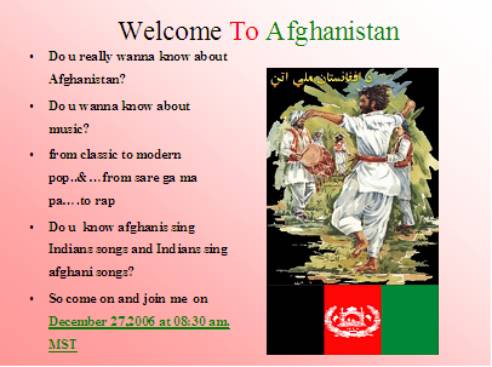
Posted by: oye_sonu Dec 25 2006, 08:58 PM
Idol ji you are doing good job. Many of us dont know all details abt Afghanistan.
Very few people are interested in telling abt thier country. !
I will try to be there ...... for the show.
best of luck
Sonu
Posted by: IDOL Dec 25 2006, 09:24 PM
Very few people are interested in telling abt thier country. !
I will try to be there ...... for the show.
best of luck
Sonu
thanks sonu ji.........looking forward to seeing you there
Posted by: IDOL Dec 27 2006, 08:43 PM
The show starts within 15 minutes......................
Posted by: IDOL Dec 27 2006, 09:04 PM
i quickly translated songs......it's not word to word translation.....not it is exact lyrics.....just to give you a general idea ....that what singer says......here they are
Posted by: IDOL Dec 27 2006, 09:05 PM
- ustad awal mir’s song “ da zemong laila watan” “our beautiful country” (pashtu)…..this country is our soul, this is Afghanistan…..this country is our soul and our faith…. we have such brave children….our great grand father’s country, this is a beloved country, this Afghanistan…..the beautiful country, this is afghansitan…..i (qurban hon jawo) for lakes, mountains, etc…..our familiar country….our beloved country..this is Afghanistan…my soul is enlighten with wich is Afghanistan…..this country is our soul…this is afghansitan
Posted by: IDOL Dec 27 2006, 09:06 PM
2. Ustad Sarahang's song " maini lakhon ke bol sahee"( Urdu & Persian mixed)
Posted by: IDOL Dec 27 2006, 09:09 PM
3. Rafi Sahab and Zhila " aai taza gul tu zeenat gulzar kesti" " O' fresh flower whose garden's beauty u are" (Persian)…F-o bird of heart whose cage r u in…M-im in ur cage…F-im ur garden's flower…..we both are the beauty of life's garden….there would be a night….where u and I and drinks……under light of moon…near a river….have a good party…forget all pains…..this is what spring of life requires…..maidens fall down on their feet…..birds of branches start singing with u…in such a garden…in such decent eyes….all beauties are reason of life….we both are the beauty of garden of life……
Posted by: IDOL Dec 27 2006, 09:12 PM
4. Dr. Fitrat Nashinas’ song “ Agar jilwa numayee” “ if you give a glimpse of your beauty” (Persian)……ir ur my love…if ur interested in loyality…if ur happy with me…if ur a loyal love of me , a broken heart….i will explain u all the pains…and I will give my life for u…..wow, with such hair…with such height…u gave hard time for flowers…u took away my secureness from me…. ur narrow waist….ur flower like mouth….u play…all nightingales will sing for u….i come to ur door….when ur dad is not around…..i ask for u….find ur trace…sit next to u….in lover’s party…when u pass me…..and talk with ur sweet lips….everyone will lose their heart and faith….ur queen of beauty….ur valuable stone….ur nightingale…don’t send ur arrows towards a muslim’s heart…wither laughter and cry I become ur slave.
Posted by: IDOL Dec 27 2006, 09:14 PM
5. Ahmad Zahir’s song “ Baaz Amadi Aai Jaan e man” “ you came back again, o’ my dear” (Persian)…..all souls to die for u (tumpar qurban hon jai)…..my soul…and hundreds like me….die for u….die for u….me who flied freely……now stuck….now I accept ur slavery….bowing…my soul and hundreds like me die for u……u said , whose beloved I am?…I say, mine, mine…my beloved…..u said, whose are u staring at?…I said, starring at u….starring at u…looking at u…hundreds like me die for u….to night if the nightingale sings, I sing with…..caoz there’s load from the night when u weren’t here…..
Posted by: IDOL Dec 27 2006, 09:16 PM
6. Farhad Daarya’s song “ Degar Bara Beshoredam, Badansanam Ba jaan e Tu” “ if I start again, I will be the same , I swear to you (tumhari qasam)” ……I dun want this short life, ur my life, I swear to u….i dun want this painful soul, caoz ur my soul ….i swear to u……if without u I am up in sky…I am as sad and dark as a cloud……and if without you I’m in a garden….actually, I am in a prison….i swear to u….if u block all the ways, I will break them all , I swear to u…..pleasant hearing would be ur name….pleasant memory would be your love….protect me, caoz I am all ruined…I swear to u…..
Posted by: IDOL Dec 27 2006, 09:17 PM
7. Faiz Karezi’s song “ Qismat che waqt basha ke toyeet konom” “ when would be the time , I can marry you” (persian)…….ur like rose…I wanna smell u like a flower…when would be the time to marry u…..i am your broken heart lover…..i luv u very much…I wanna kiss ur hand from the night of weddin till morning ……when would be the time to marry u…….will buy u pearls…..every stuff (nazar na lagne ke) buy for u…..when would be time to marry u…….send u beautiful dresses…when would be the time to marry u…….turn on the gas light….lighten all villages…..bring different dishes….invite all villagers…..put on beautiful necklaces on ur neck…..when would be the time to marry u…
Posted by: IDOL Dec 27 2006, 09:18 PM
8. Dr. Fitrat Nashina’s song “ Ashiqam ba royat, tu daani ya na daani” (Persian) “ I love your face beauty, do u know it or not”……I am interested in you , do u know it or not ……o’ non believer…u took away all my soul and heart….ur luv made me embarrassed infront of all….my heart is searching for u…do u know it or not……uv made and then broke the promise….love became toy of children……ur good manner killes me…do u know it or not….
Posted by: IDOL Dec 27 2006, 09:19 PM
9. Qadir Eshpari’s song “ Naazi jaan” (Persian) “ dear Naazi”……dear naazi ur stealing my heart….dear naazi ur mine…dear naazi with your one glance…uv made me crazy… same to those stories of Laila…u’ve made me ….majnoon….naazi come back to me…..(incomplete)
Posted by: IDOL Dec 27 2006, 09:20 PM
10. Naghma’s song, “mohabbat” (Pashtu) “love”….if love wasn’t a burning fire…I wouldn’t have gone crazy for u…all night I cry for u…..i ask u from almighty Allah…. I wouldn’t fall in luv with u easily….if ur eyes weren’t such killer…..i am like a dew and ur butterfly…..i wish u never had relation with flower…I wouldn’t have gone crazy for u….i cry all night…I ask u from almighty Allah…..
Posted by: IDOL Dec 27 2006, 09:22 PM
11. Shamshad Gawandai’s remix “ roo roo kegda qadamoona ashna” (Pashtu) “ walk slowly, slowly” ……walk slowly….pain of heart lets everyone know….slowly put ur hands….ur bangles make noise…..ur face is beautiful like a flower….ur wearings are nice….ur real home is KABUL….ur love burns whole world….(incomplete)
Posted by: IDOL Dec 27 2006, 09:32 PM
the musical instruments talked about in the show are:
- Daira

- Drums

- Dhool or Dool

- Rubab

- Ghichaak or Richaak

- Sarinda

- Tambor or Tanbor

- Tula

- ZerBaghali
Posted by: IDOL Dec 27 2006, 10:24 PM
This is naghma
http://upload.wikimedia.org/wikipedia/en/f/ff/Naghmaxxx1.jpg
Posted by: IDOL Dec 27 2006, 10:26 PM
naghma
http://upload.wikimedia.org/wikipedia/en/7/76/Naghmaxxx2.jpg
Posted by: IDOL Dec 27 2006, 10:26 PM
naghma
http://upload.wikimedia.org/wikipedia/en/d/db/Naghma.jpg
Posted by: Nimii Dec 28 2006, 02:17 PM
I just got one word to describe this programme - SUPERB! Ppl who missed this programme! You really missed it guys! It was worth every minute of the 1. 40 odd mins programme!
Khobi (IDOL) has put all her efforts of collecting information over a period of time and had given us an insight into the geography, chronological events of the country, the people, the music and everything associated with Afghanistan! She did a voice over programme which was fantastic and I would recommend a repeat of this programme, (tho' I have stealthily recorded it ![]() )
)
Inaam, Shaibaal, Mukeshfan who were with me and listening to this programme will concur with me!
IT WAS TOOOOOOOOOOOOOOOOOOOOOO GOOD!
KHOBZ! EXCELLENT PROGRAMME FROM YOU GIRL! WAY TO GO! Looking forward to such illustrative, illuminating programmes from your end!
Thanks for relaying it when I could sit back and listen (apart from jigging to those fast numbers ![]() )
)
THANK YOU!
N ![]()
Posted by: bawlachintu Dec 29 2006, 07:09 PM
Good presentation Khobi. Congratulations !
Posted by: Inaam Dec 29 2006, 09:29 PM
![]() Well done, Khobi. It was a marvelous show!!!
Well done, Khobi. It was a marvelous show!!!
Posted by: IDOL Dec 30 2006, 12:09 AM
Khobi (IDOL) has put all her efforts of collecting information over a period of time and had given us an insight into the geography, chronological events of the country, the people, the music and everything associated with Afghanistan! She did a voice over programme which was fantastic and I would recommend a repeat of this programme, (tho' I have stealthily recorded it
Inaam, Shaibaal, Mukeshfan who were with me and listening to this programme will concur with me!
IT WAS TOOOOOOOOOOOOOOOOOOOOOO GOOD!
KHOBZ! EXCELLENT PROGRAMME FROM YOU GIRL! WAY TO GO! Looking forward to such illustrative, illuminating programmes from your end!
Thanks for relaying it when I could sit back and listen (apart from jigging to those fast numbers
THANK YOU!
N
awwwwww, sooooo sweet of u Nimzzz........i had ur support and that's why i did this show....thanks for ur support, care and love......as i had mentioned before...ur a unique personality of HF.....
thanks, bawlachintu and Inaam .......very kind of u two
Powered by Invision Power Board (http://www.invisionboard.com)
© Invision Power Services (http://www.invisionpower.com)
